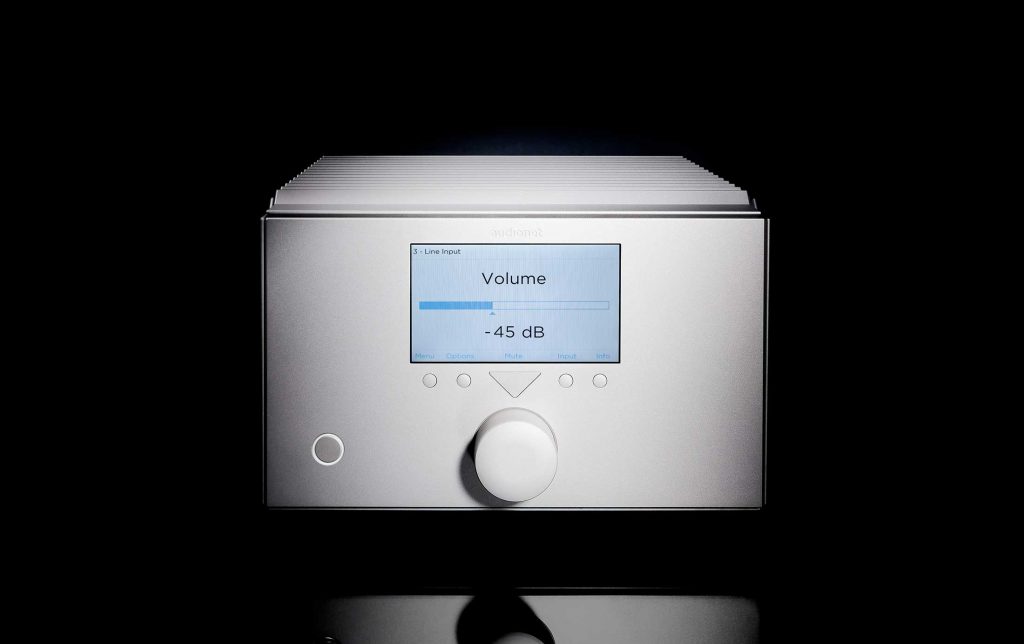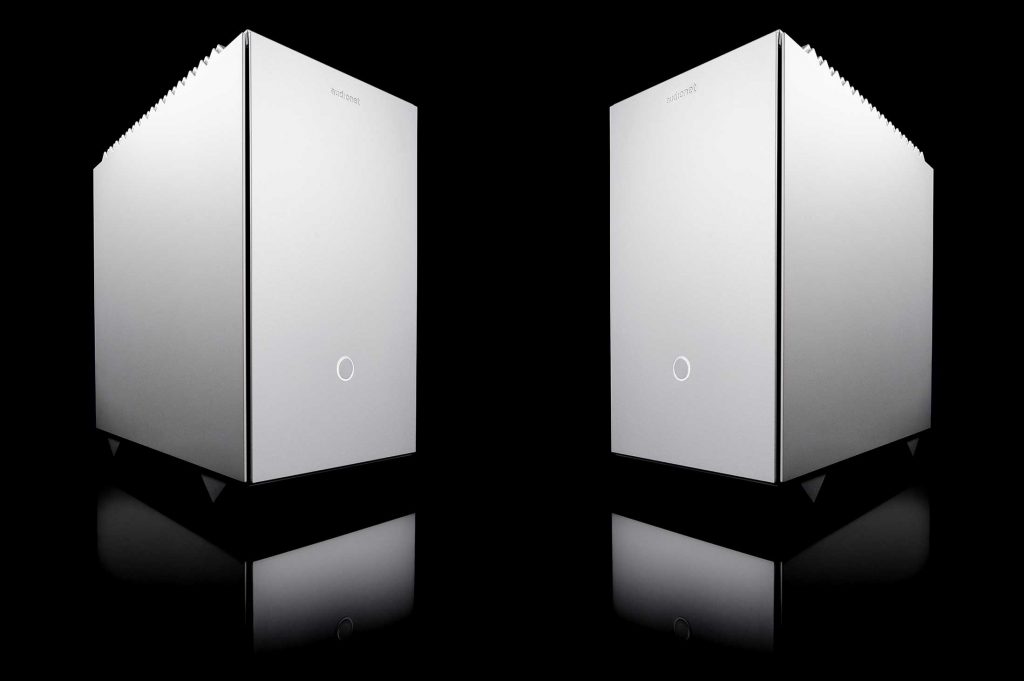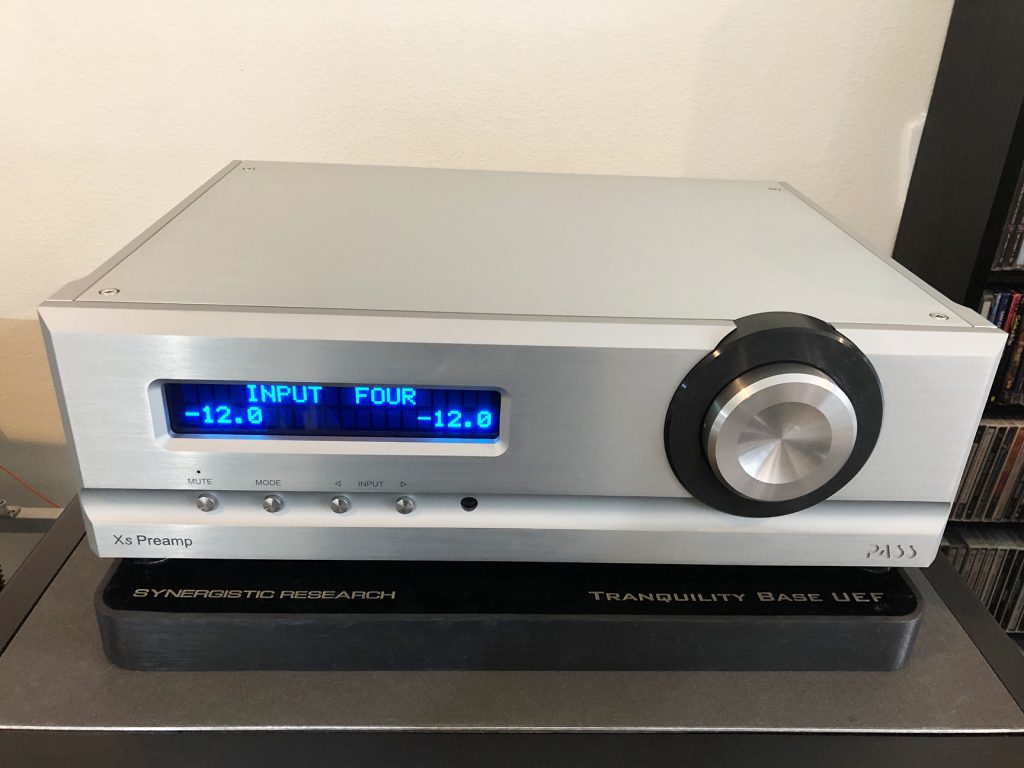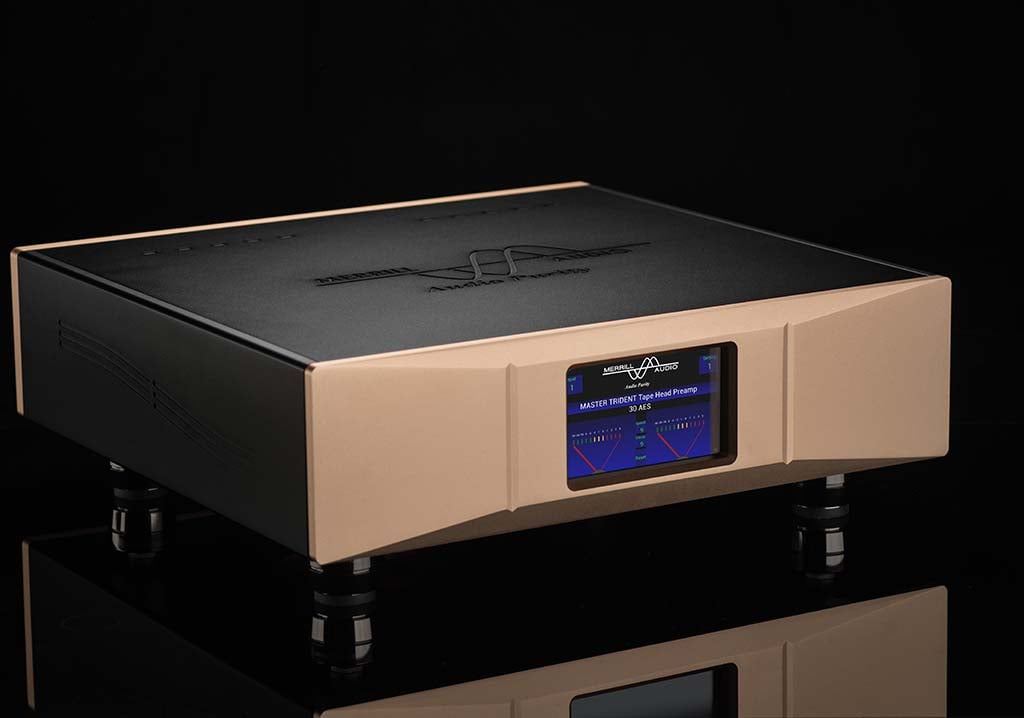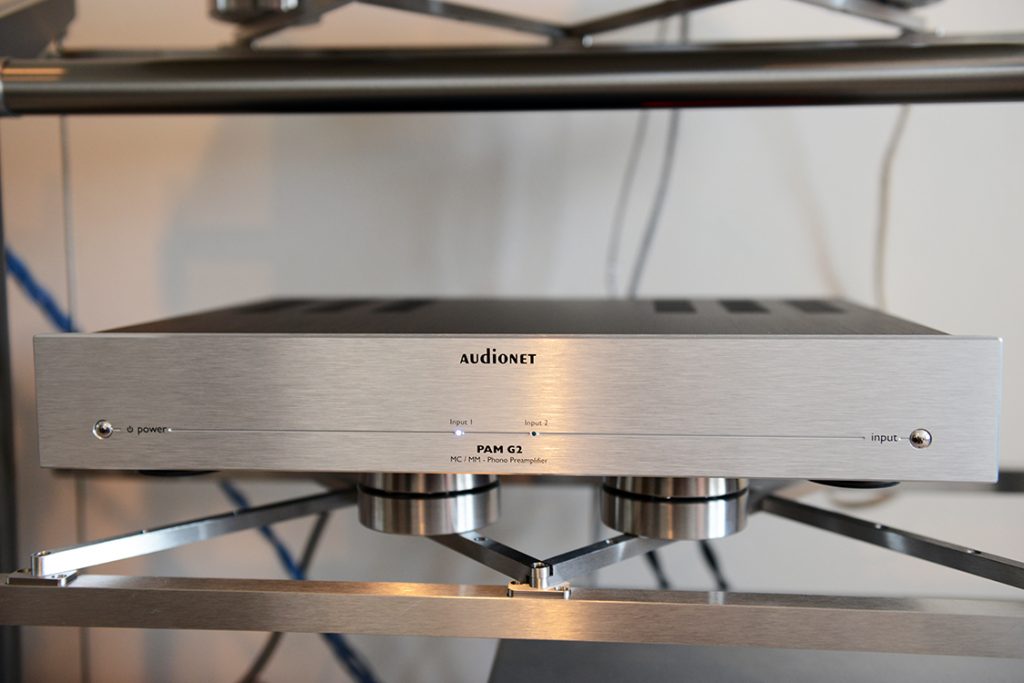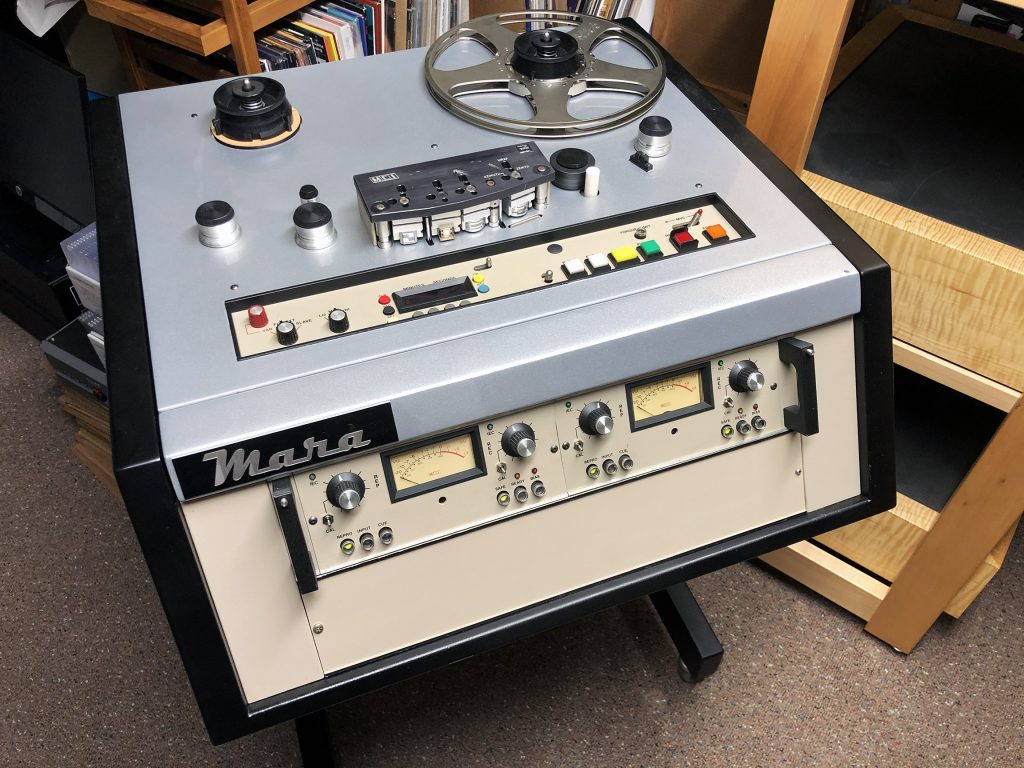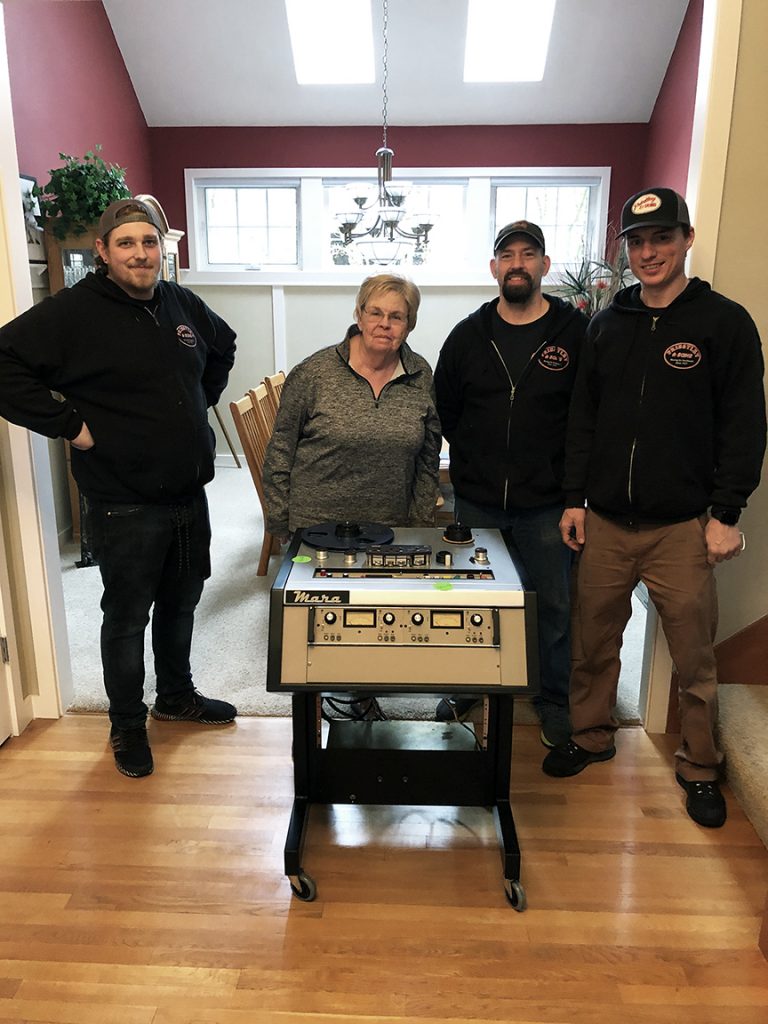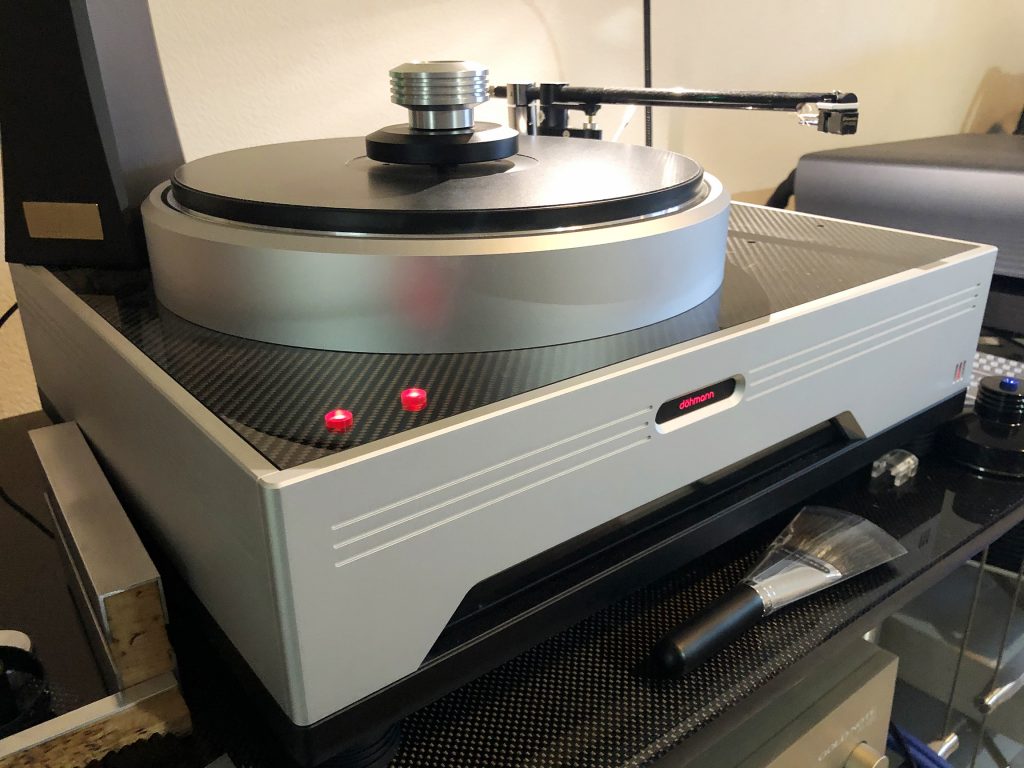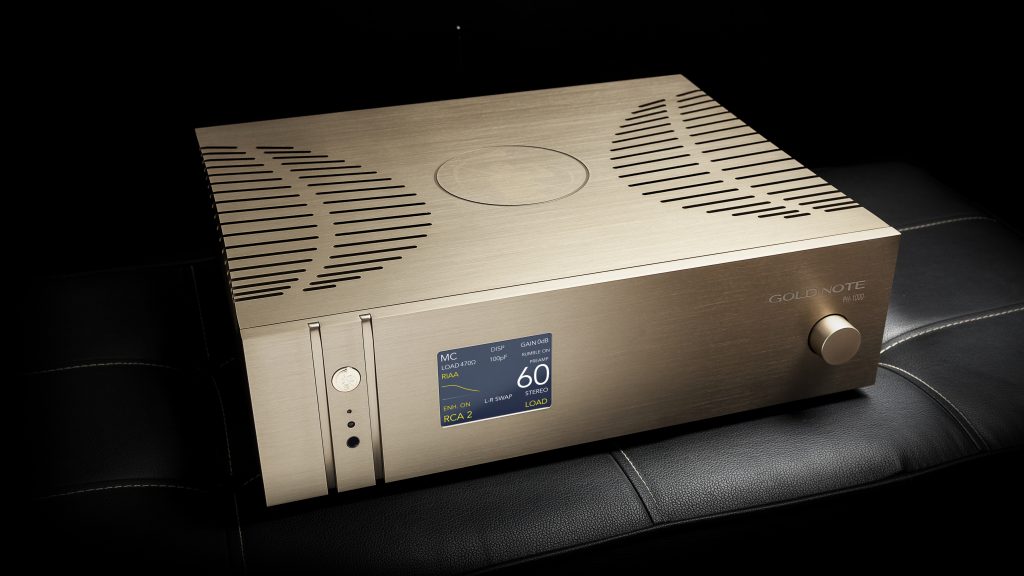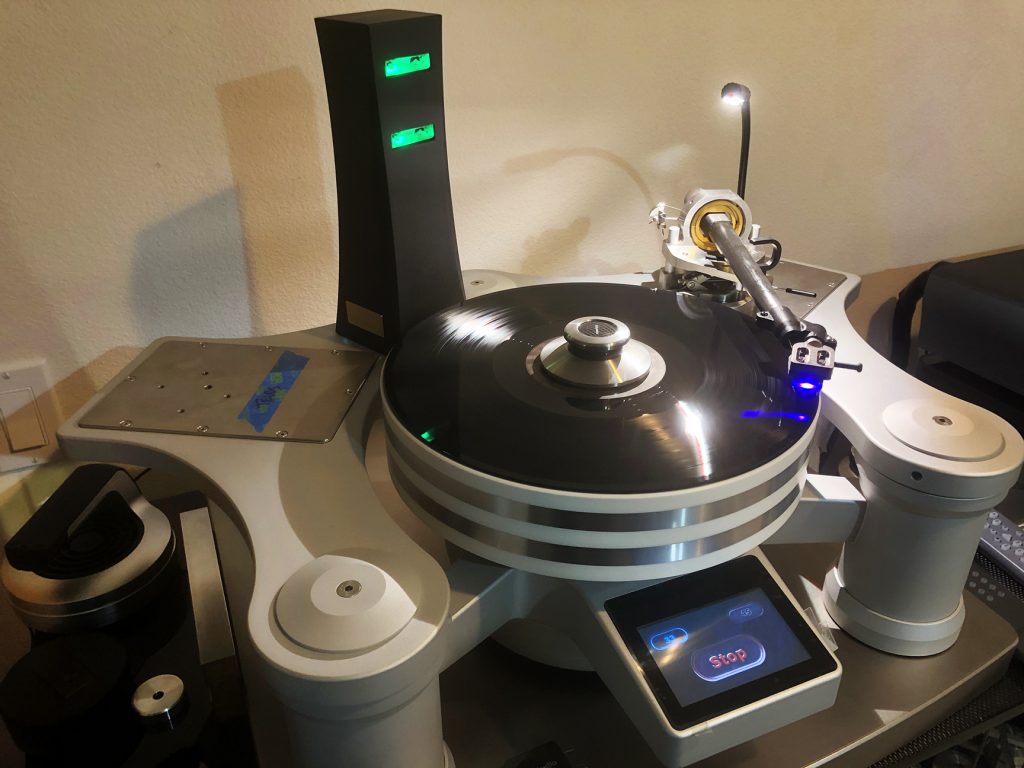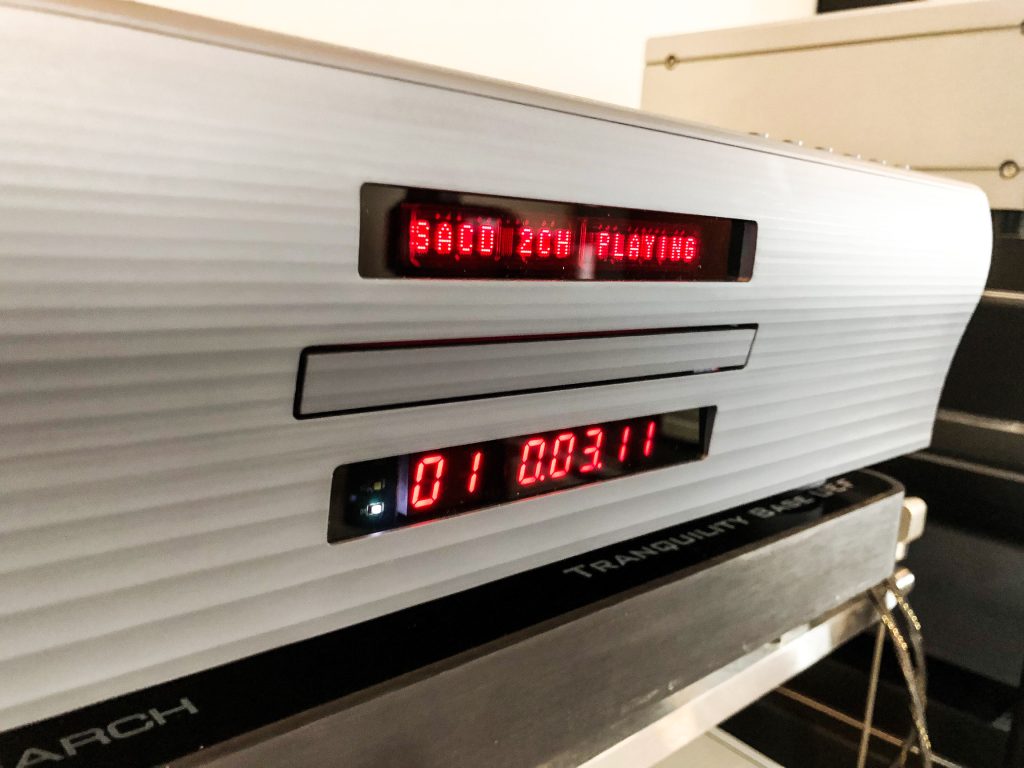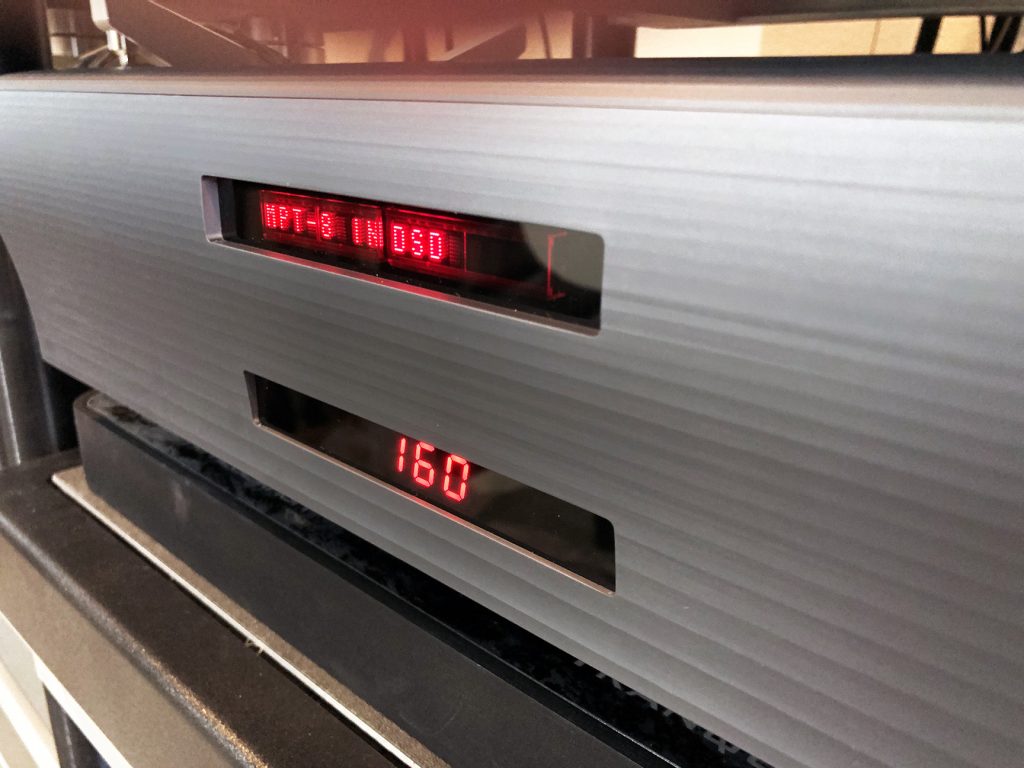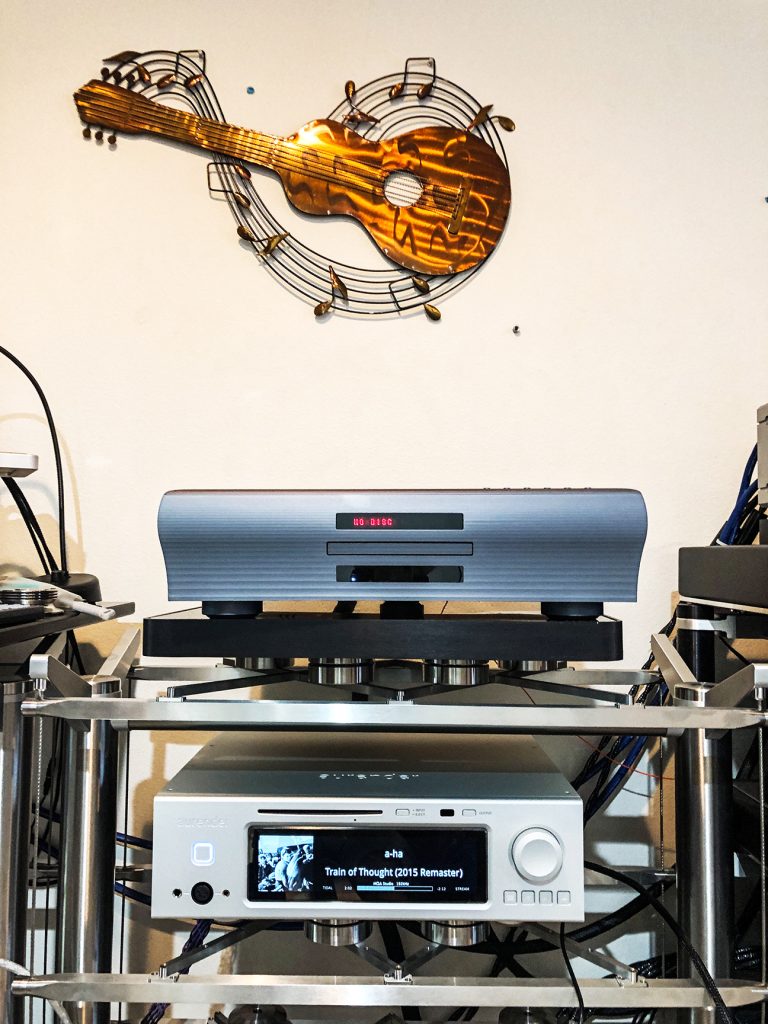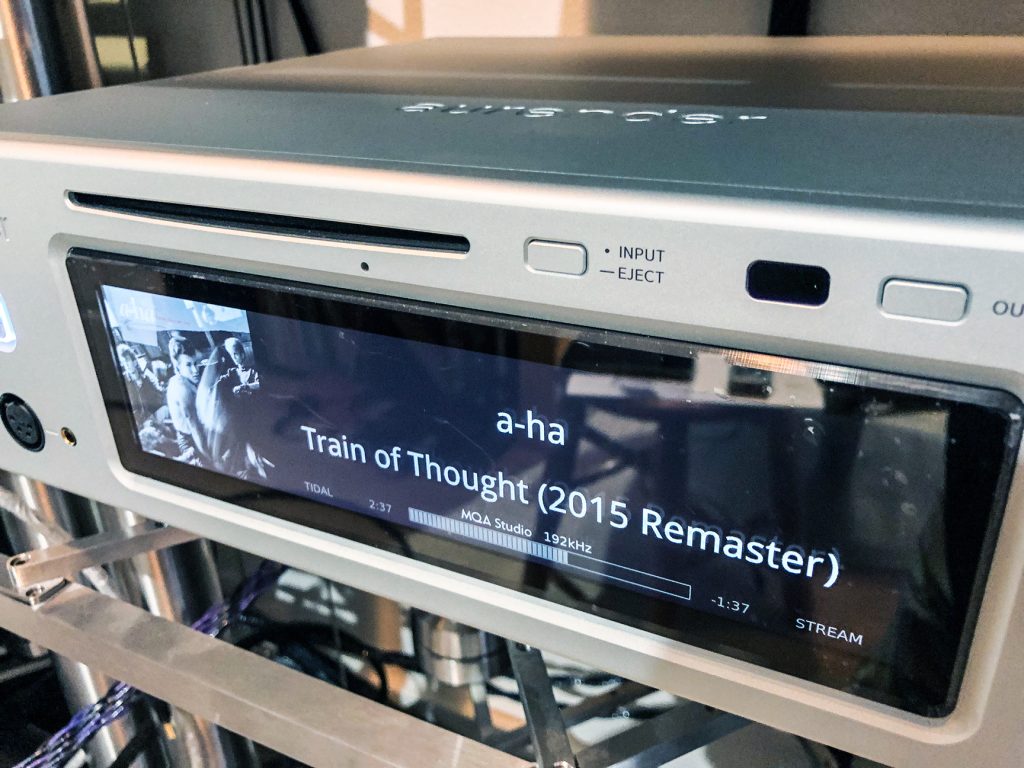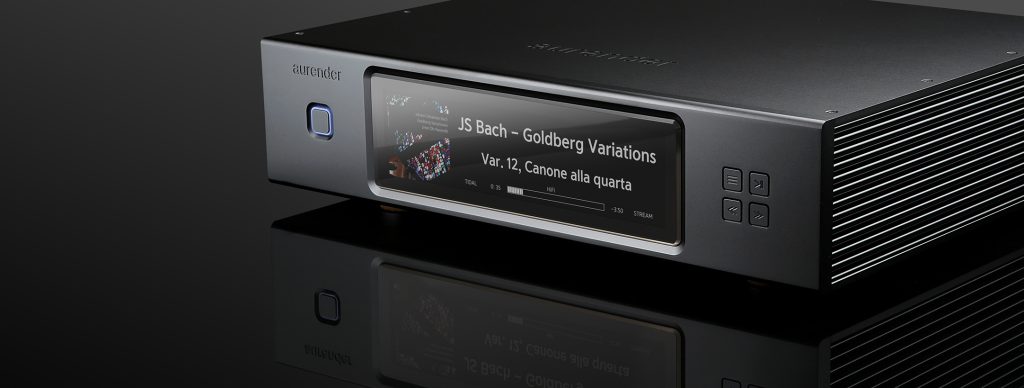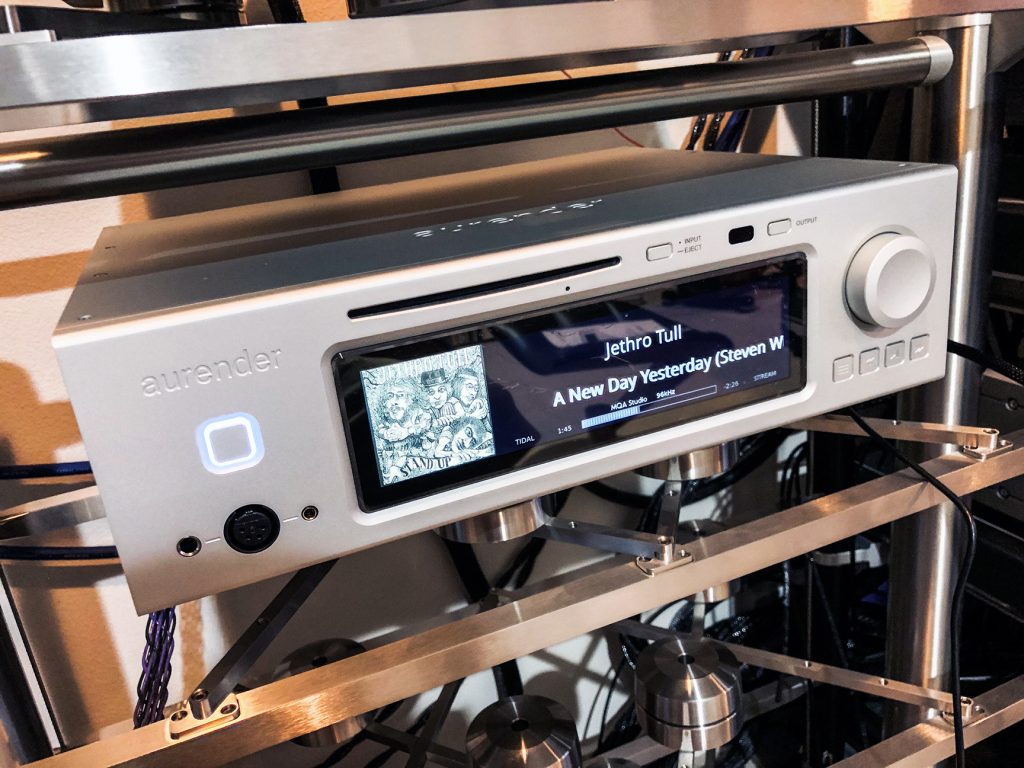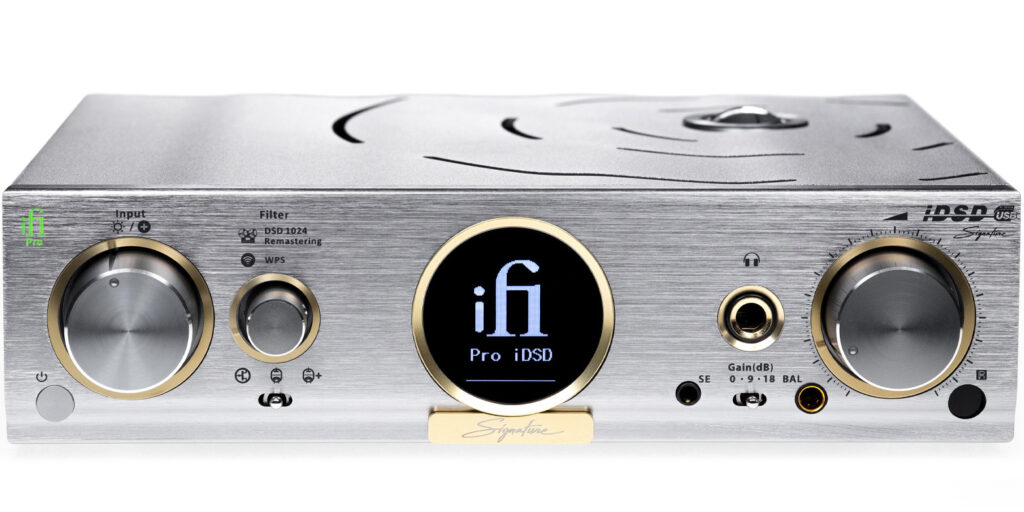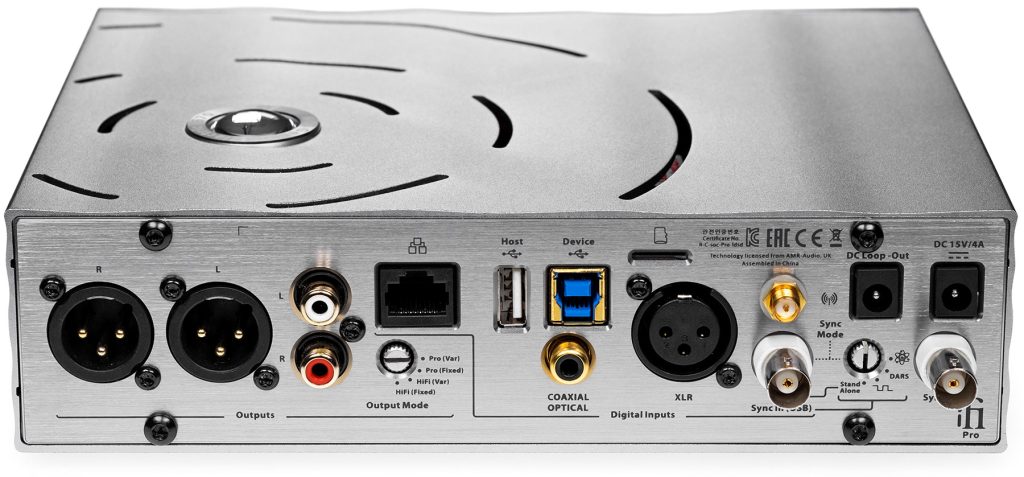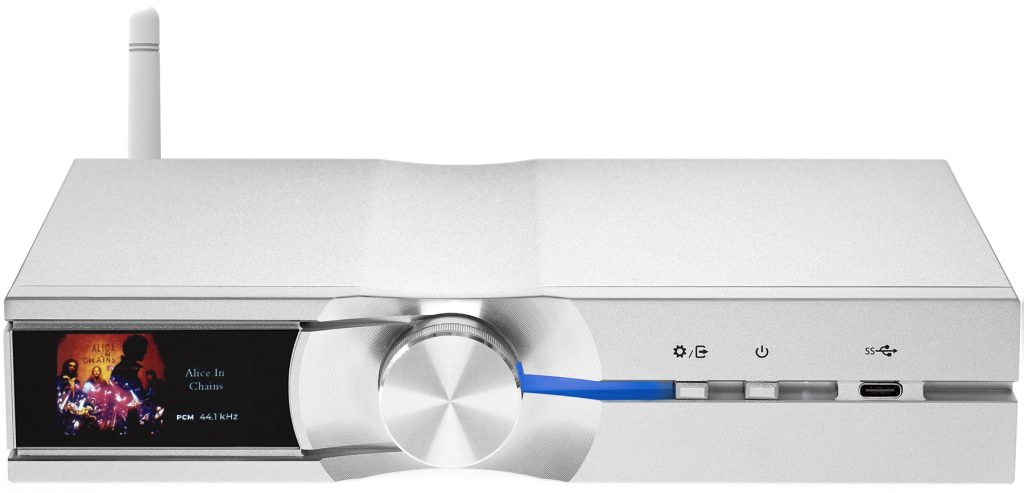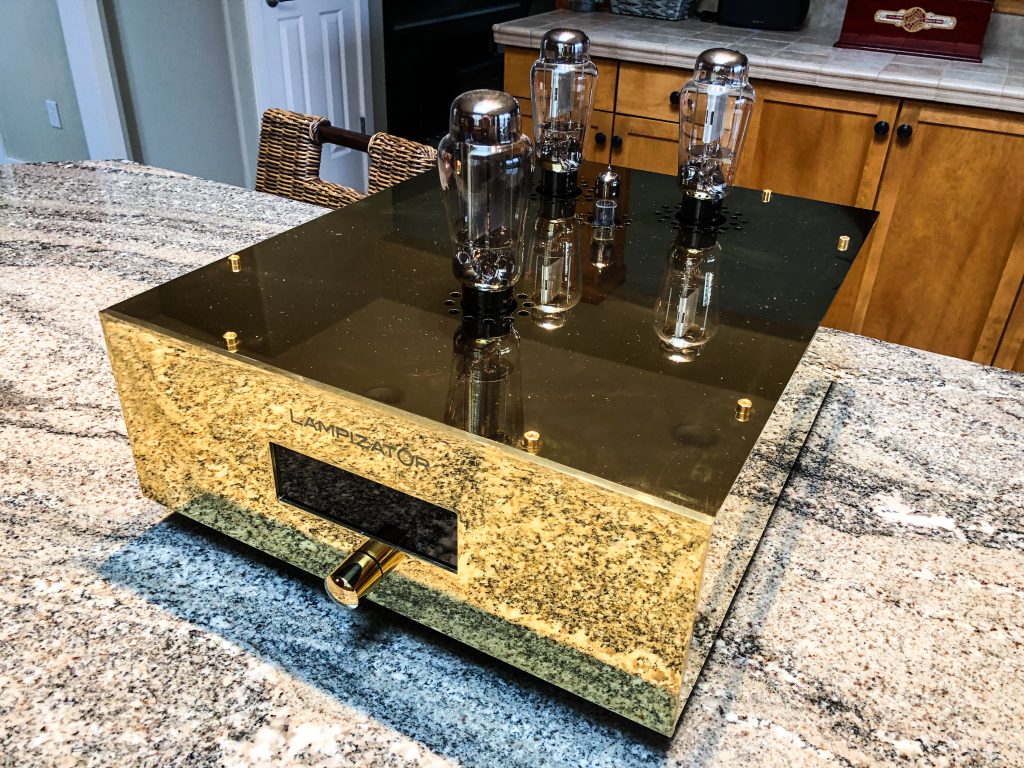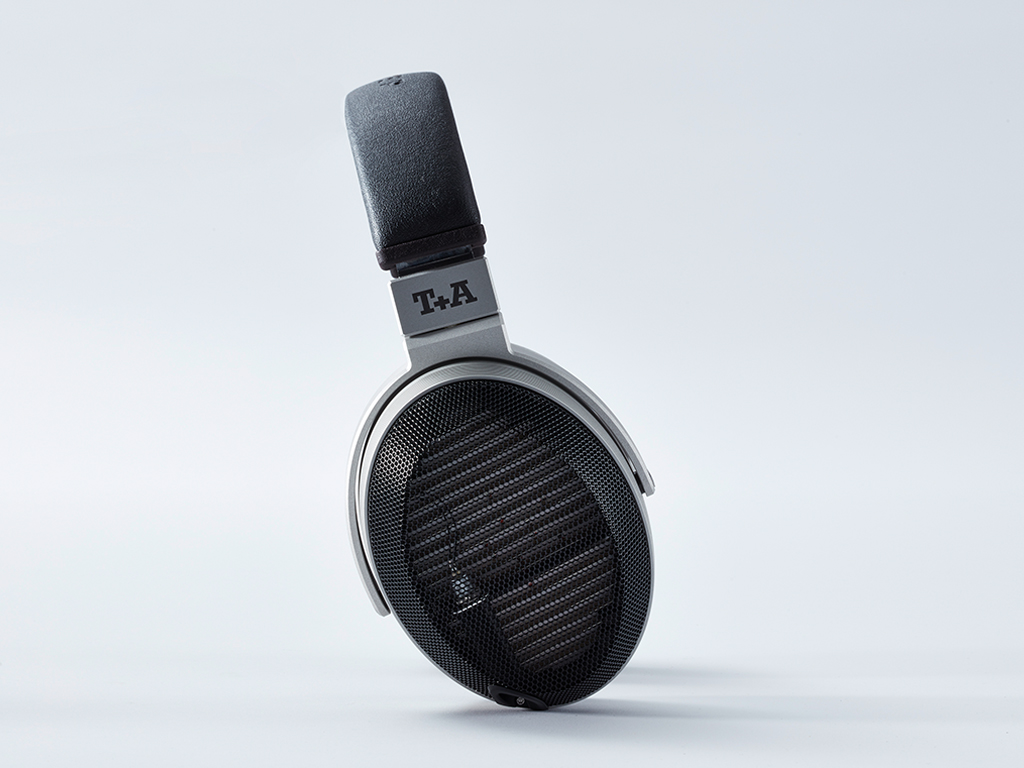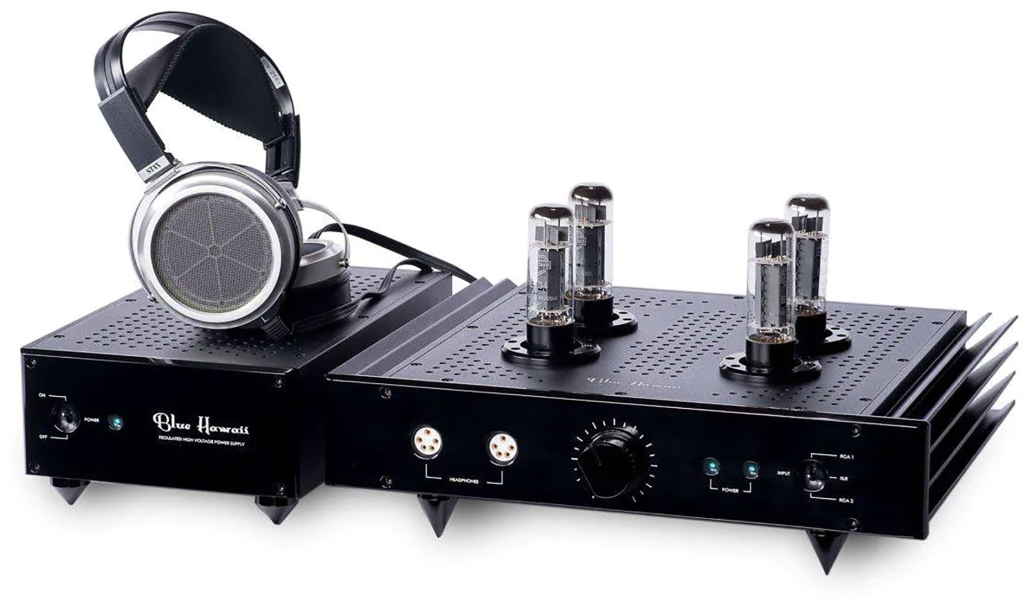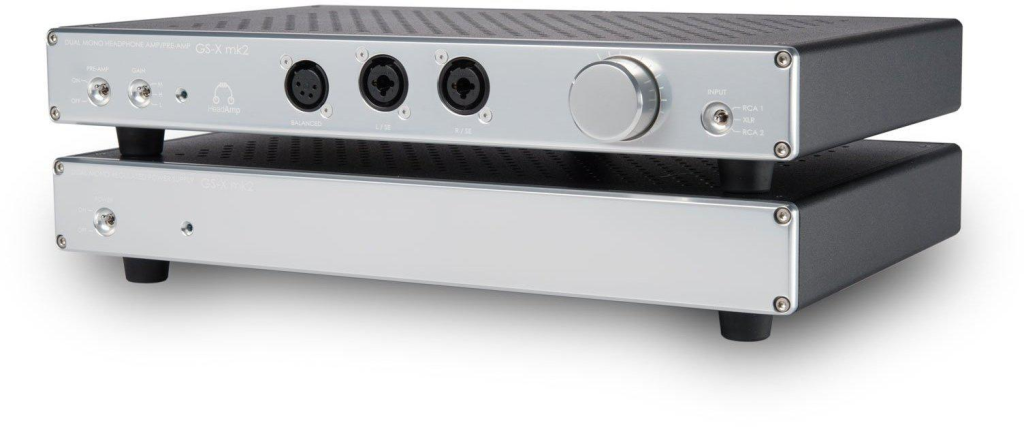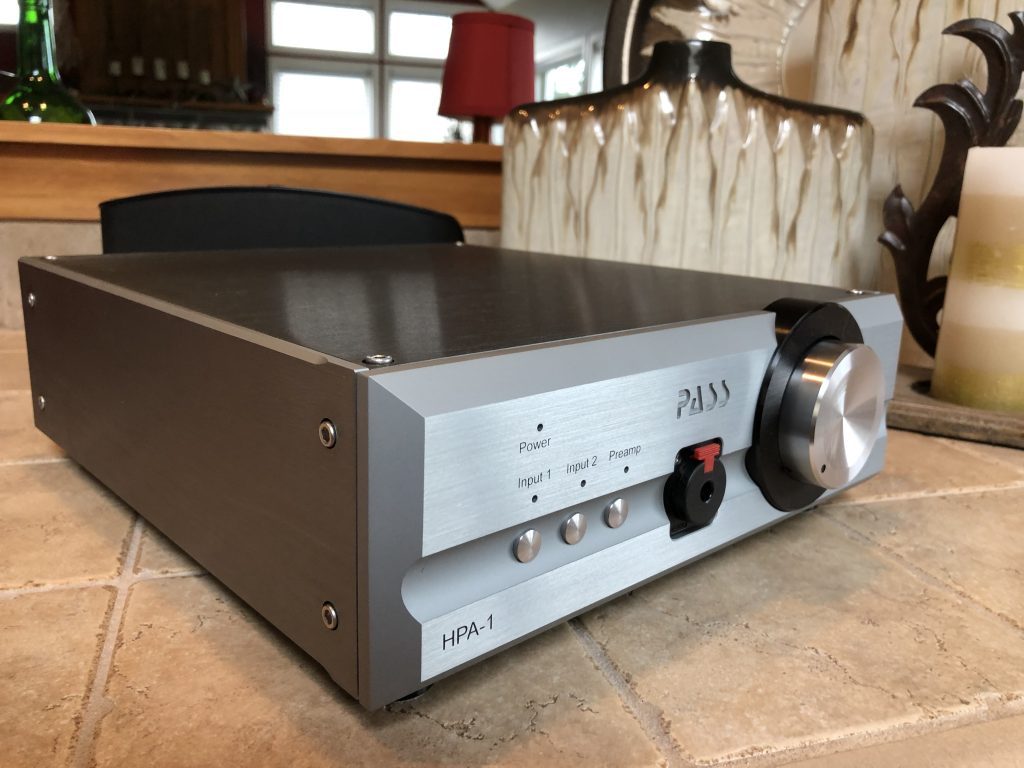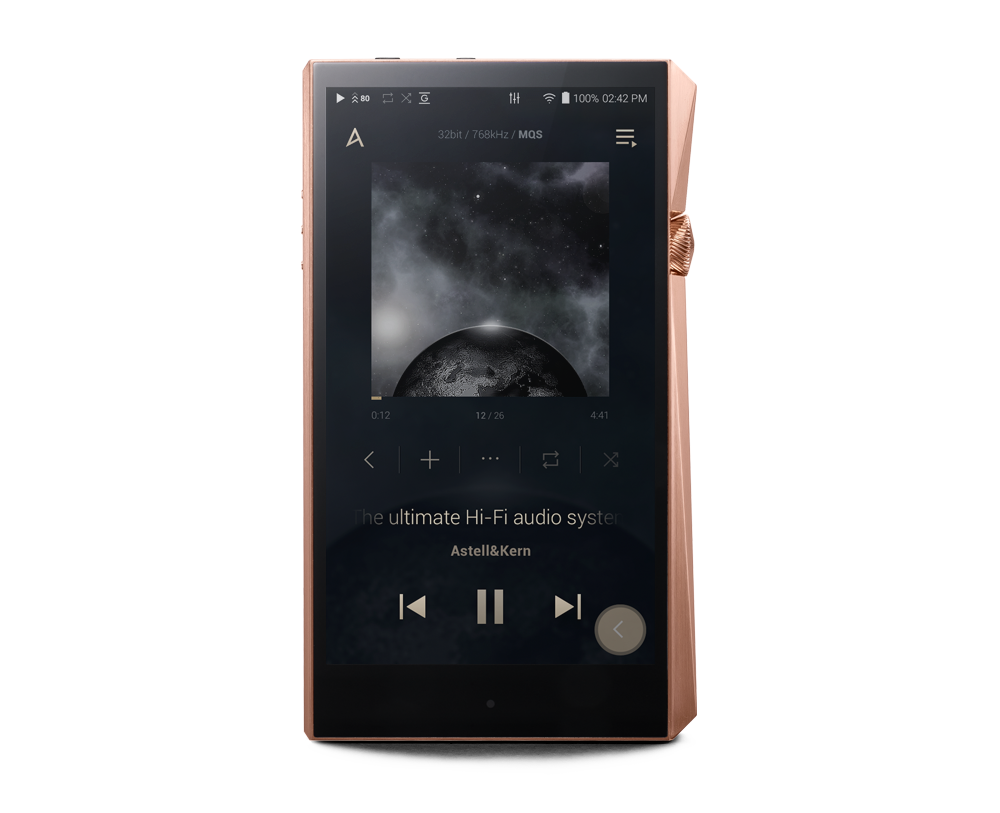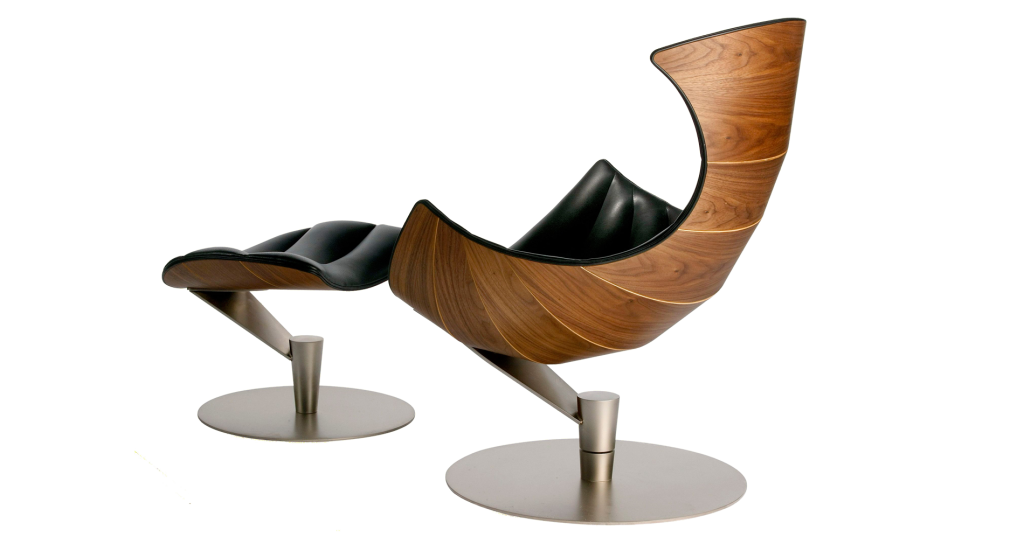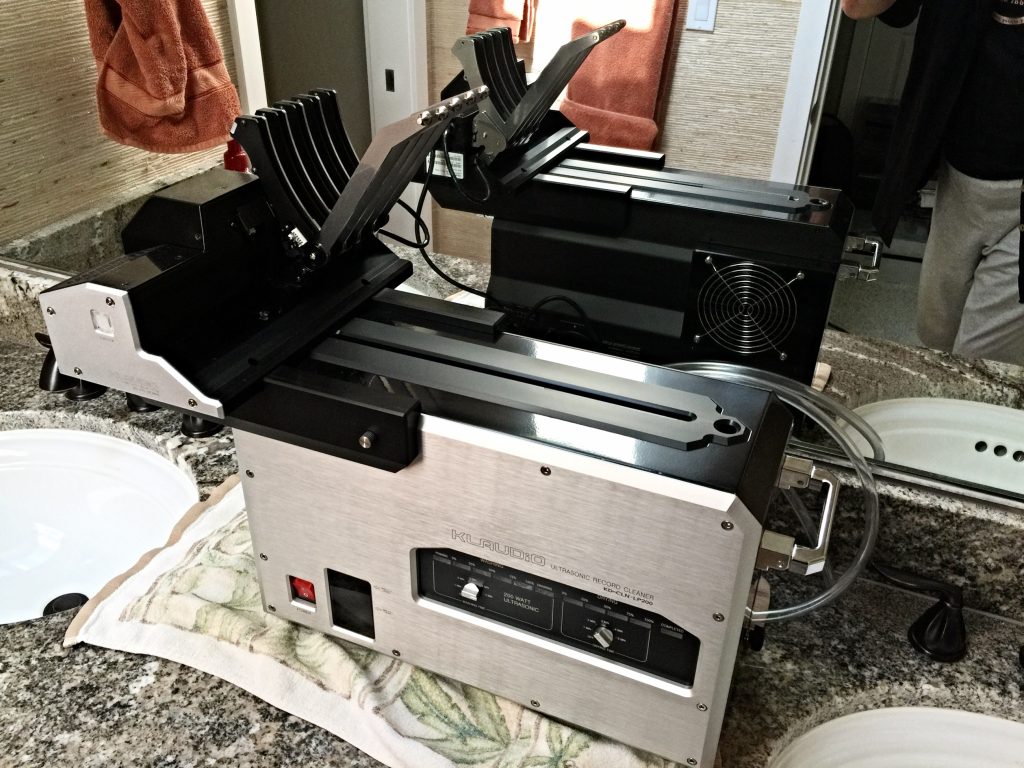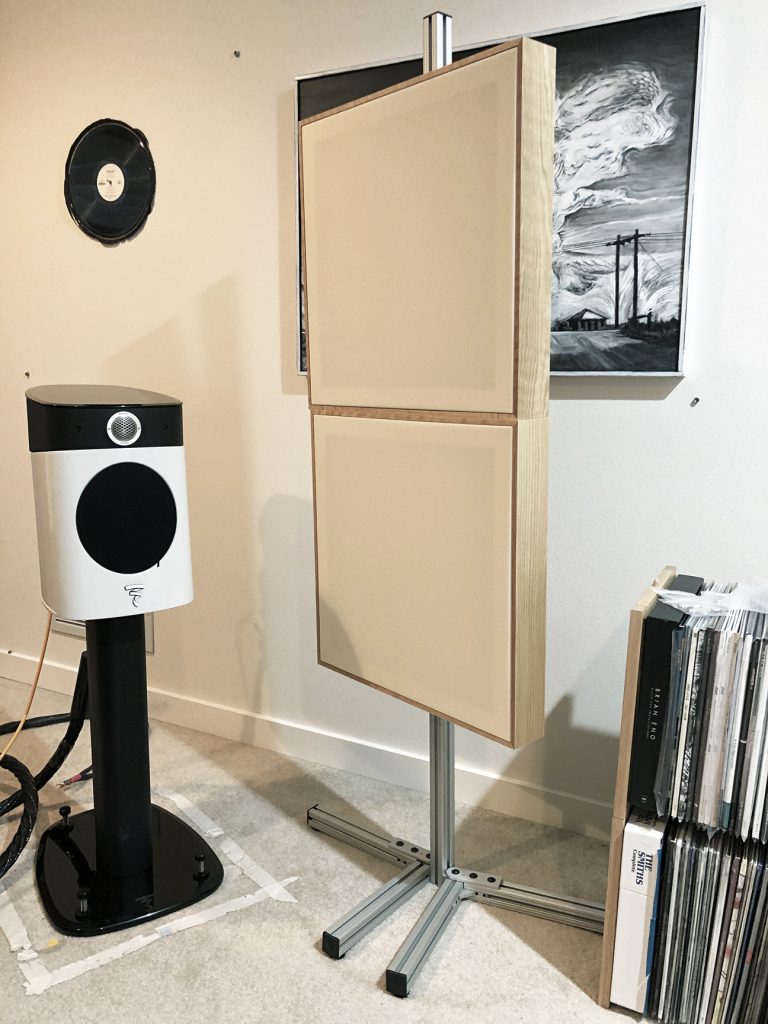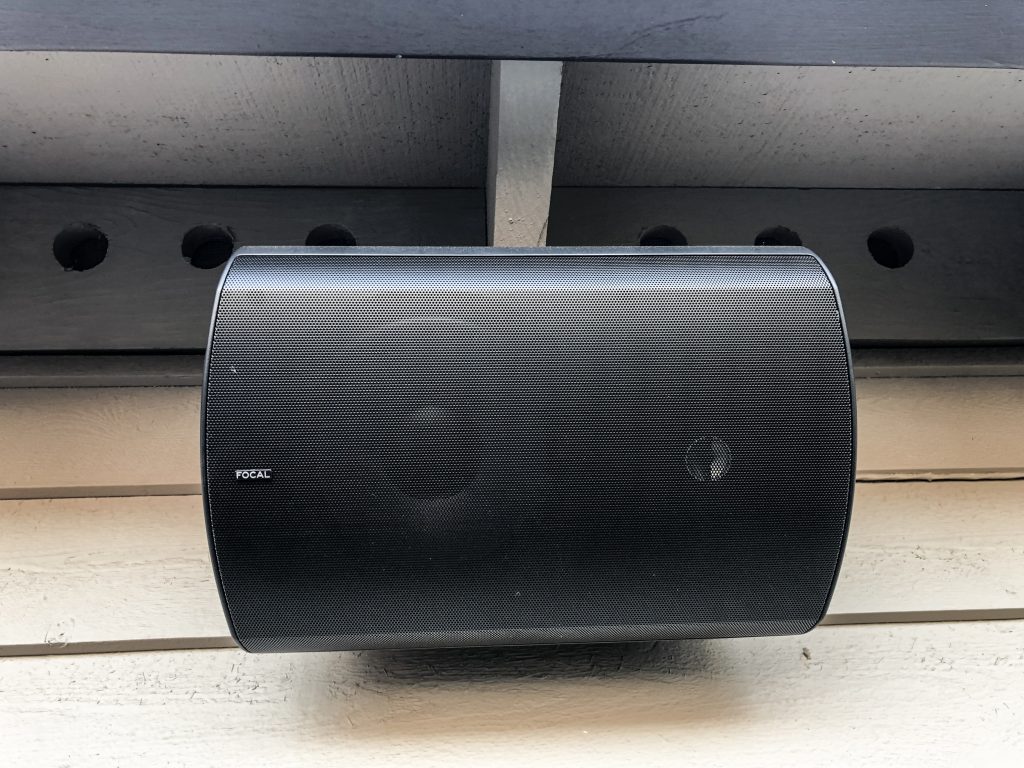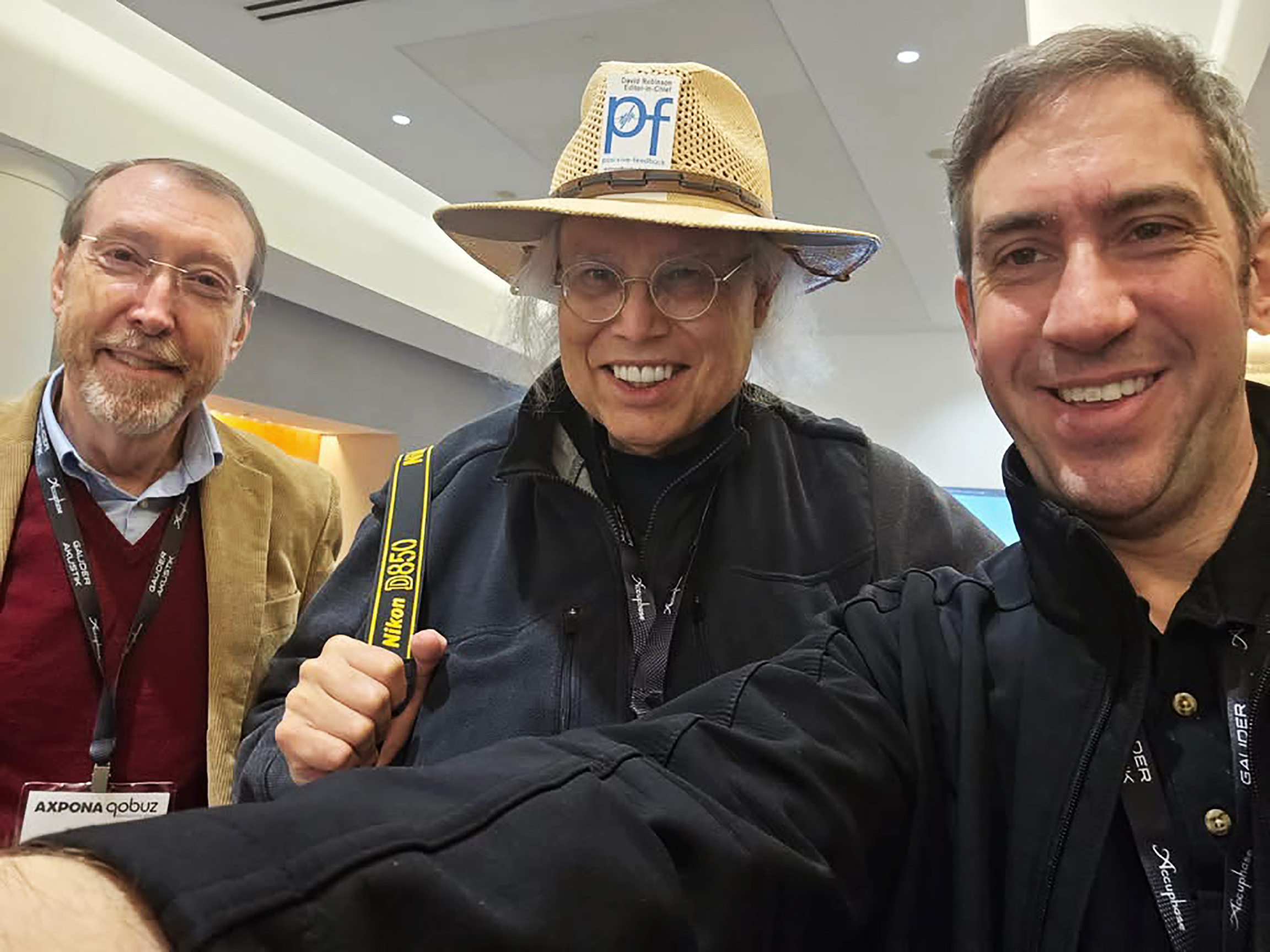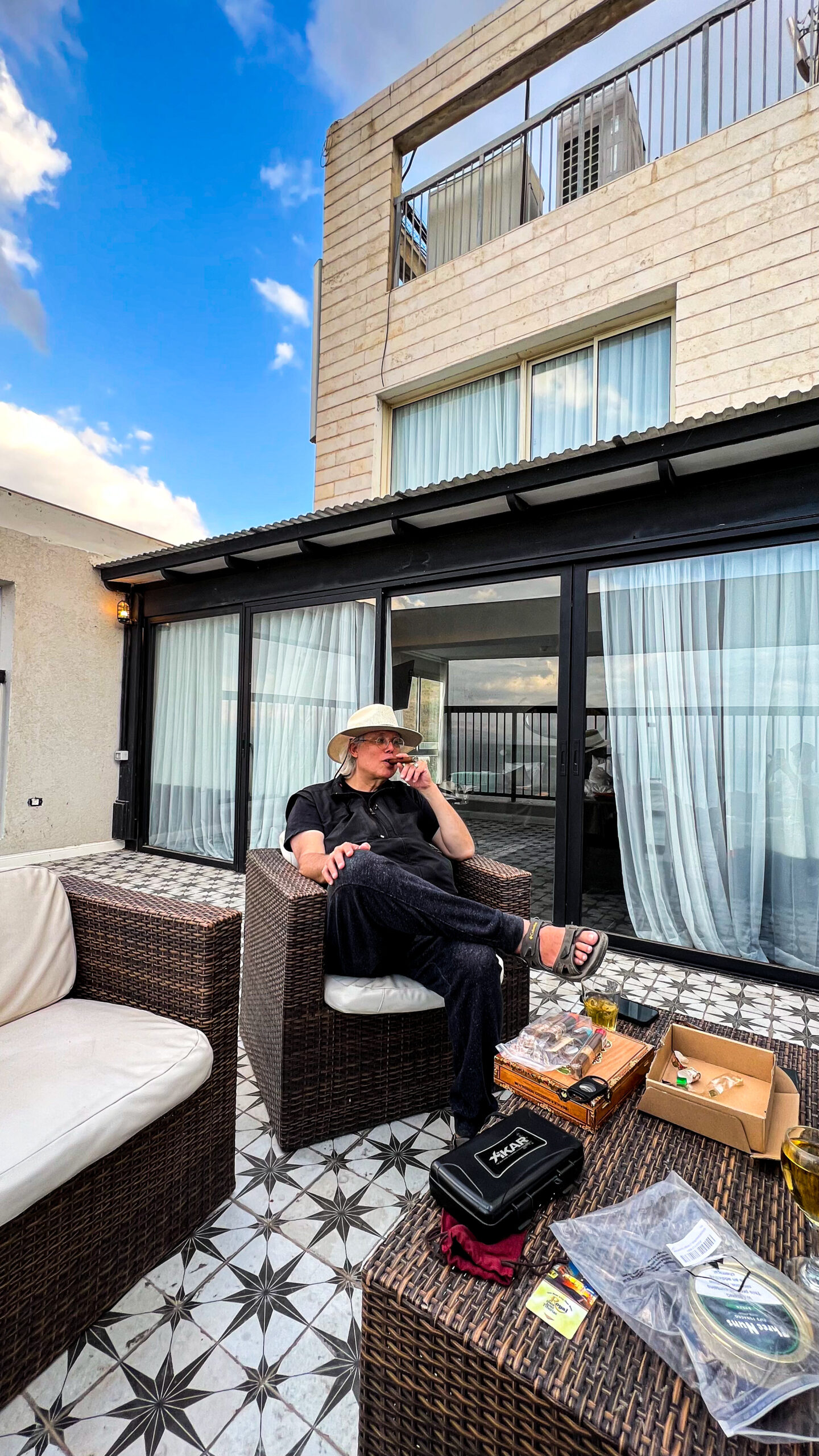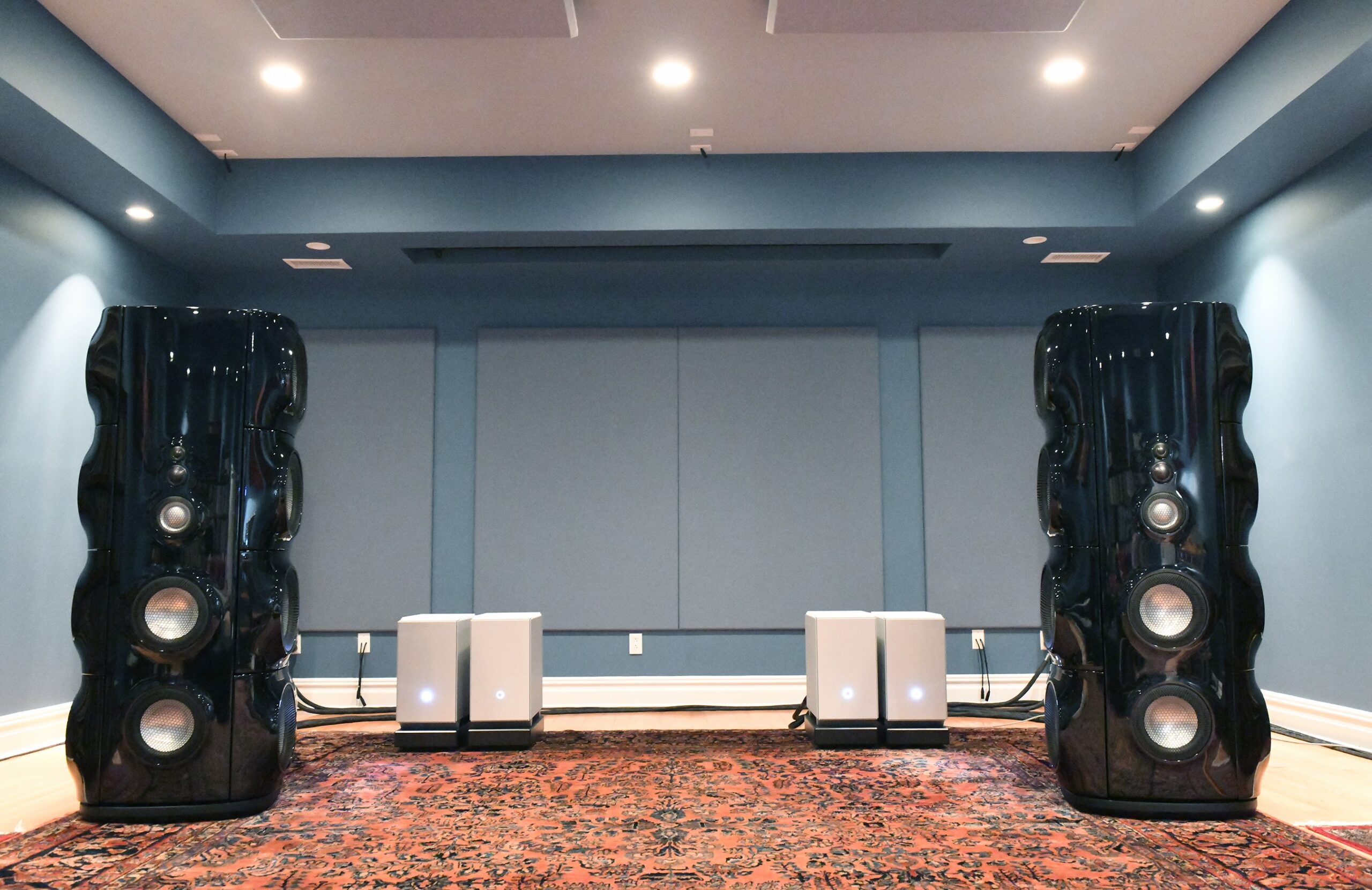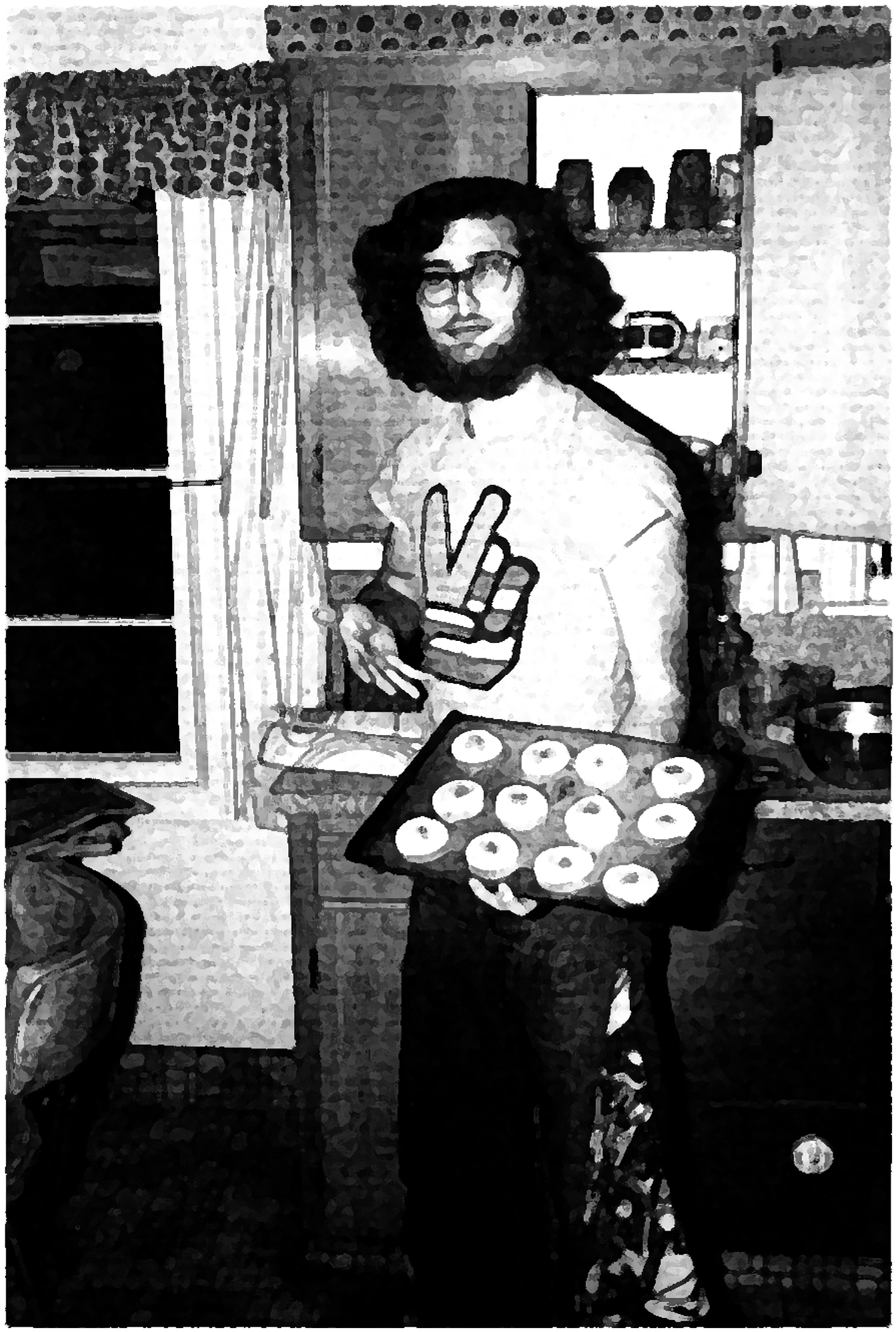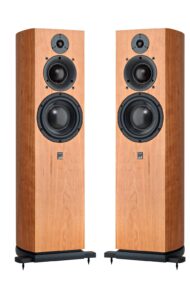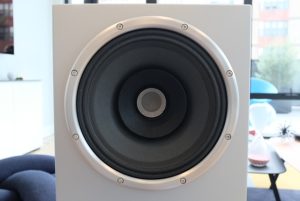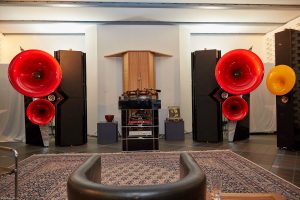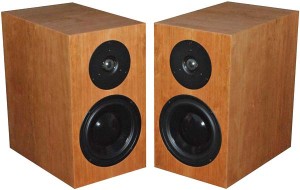
Ye Olde Editor: a portrait. Happy Valley, OR, 2020. (Photograph by David C. Robinson; image processing by David W. Robinson)
It takes time for good things to happen.
A child in the womb. A person growing to maturity. Creating art. Composing music. Writing. Fine photography. The aging of wine, whiskey, bourbon, tobacco. All are the fruit of time, from conception to finish, and reward patience and perseverance.
It's true of fine audio reviewing, too.
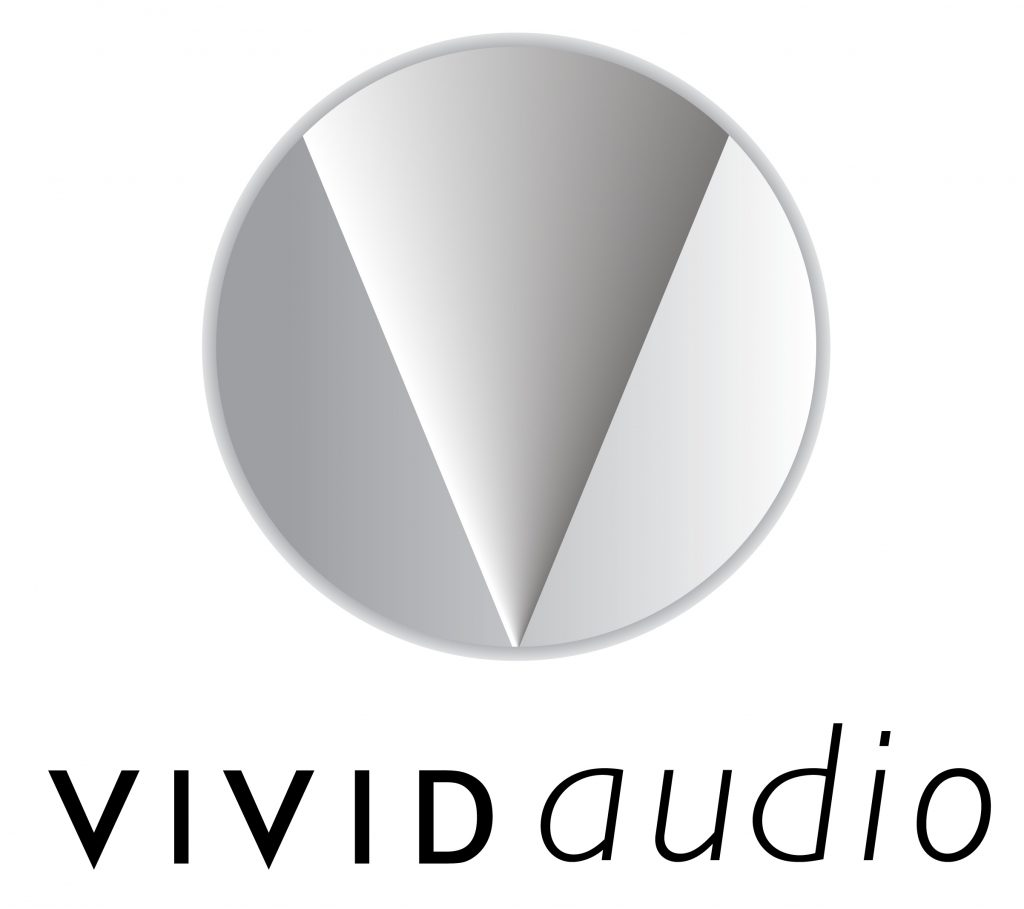
For instance:
Back in December, I spoke briefly of my time with the VIVID GIYA 1 Series 2 Loudspeakers in 2020. Unconventional in every way, they towed my heart away (thanks John and Paul!) with their brilliant performance. I was taken by the remarkable feeling that they gave me, and their truly musical presence…so much so that I gave them the first of my first Brutus Awards for 2020.

Before I get into my final reflections on the VIVID GIYA G1Series two, here are the specifications, for those interested:
Specifications for the VIVID Audio GIYA G1 Series 2
- Configuration: 4-way 5 driver system
- Cabinet material: Glass reinforced balsa cored sandwich composite
- Cabinet colour: Piano Black, Pearl White
- Bespoke colour: Available on request
- Drive units: HF: D26 – 26mm metal dome unit with Tapered Tube loading. Mid: D50 – 50mm metal dome unit with Tapered Tube loading. Lower-mid: C125S – 125mm with Tapered Tube loading. Bass: C225 – 2 x 225mm metal coned units with short-coil long-gap motor design
- Bass loading: Exponentially Tapered Tube enhanced bass reflex
- Sensitivity: 91dB @ 2.83VRMS at 1m on axis
- Nominal impedance: (Ω) 6 nominal, 4 minimum, low reactance
- Frequency range: (Hz) – 6dB points: 25 – 36,000 Hz
- First D26 Breakup mode: 44,000 Hz
- Frequency response: 29 – 33,000 Hz +/- 2dB on reference
- Harmonic distortion: (2nd and 3rd harmonics) < 0.5% over frequency range
- Crossover frequencies: 220Hz – 880Hz – 3,500Hz
- Power handling: (music program) watts rms 800 watts
- Loudspeaker dimensions: 1,700mm (H) x 440mm (W) x 820mm (D)
- Net weight: 74kg
Background…music and memories…
After my time with the Raidho TD 4.2 speakers earlier in 2020, and before the arrival of the Raidho TD 3.8s later that year, I knew that I had an opening to evaluate a different loudspeaker. One of the names that came to my mind immediately was VIVID Audio.

Philip O'Hanlon: a portrait. LA Audio Show LA, CA, 2017 (photograph and image processing by David W. Robinson)
This was no happenstance. I had become familiar with them across a handful of years at audio shows, because of my acquaintance with Philip O'Hanlon, he of On A Higher Note. While he no longer handles VIVID, there was a period during which Philip was showing various models of the VIVID line. Philip has a fine sense of great music, and always demoed with excellent recordings from his extensive collection of LPs. I enjoyed dropping in, just to dig the recordings that he would share.
As I listened, year by year, I found myself drawn to the look, the feel, and the near-magical musicality of the VIVID loudspeakers. Whether larger or smaller, the VIVIDs were exactly that…but did so without being bright.
And the VIVIDs were always visually seductive. Did I mention that? I'm sure that I must have….
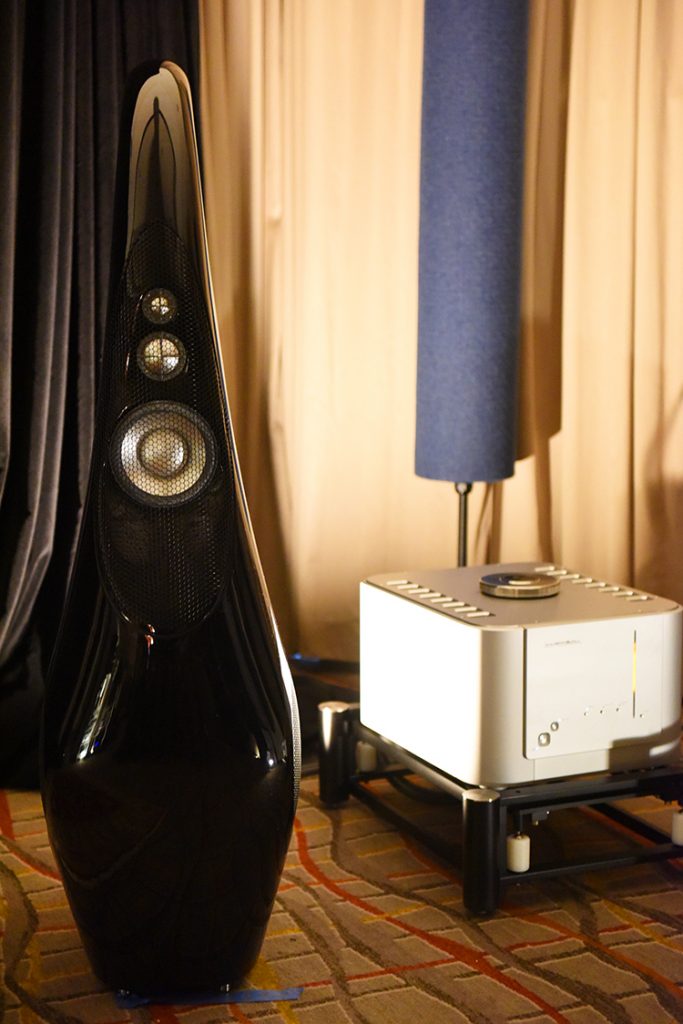
The VIVID GIYA with the Luxman B-1000 Monoblock Amplifier, 2016 (photograph and image processing by David W. Robinson)
The larger and finer the electronics, the more that VIVIDs simply vanished, filling an exhibition room with effortless presence. And they did so under show conditions, which is always an accomplishment. (Just ask a show exhibitor.)
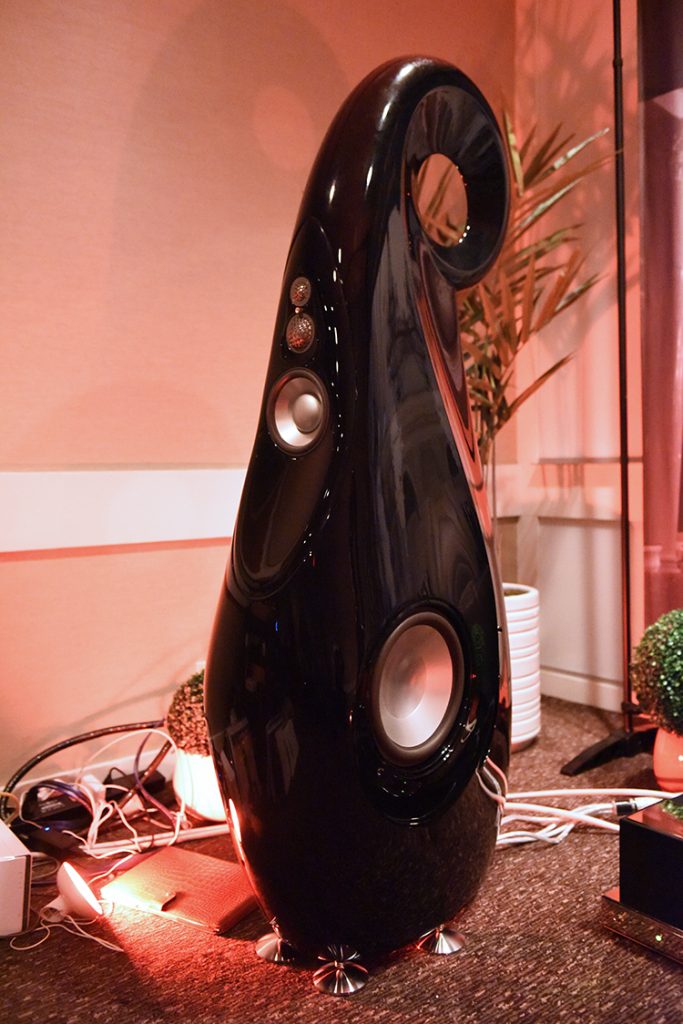
VIVID show time! Audio seduction on parade, 2017… (photograph and image processing by David W. Robinson)
These audio experiences and impressions kept VIVID in my mind over the years. I was always curious: how would a pair of the larger VIVIDs sound in our reference stereo listening room? The opportunity to find an answer to this question wouldn't happen until 2020, when I had an opening appear in my loudspeaker review queue. It was time to give them an evaluation, if VIVID was interested.

Laurence Dickie of VIVID Audio, the master designer of the line (photograph courtesy of VIVID Audio)
As it turned out, Laurance Dickie was willing to send a review pair of the VIVID GIYA G1 Series 2 loudspeakers. These arrived in early 2020, that oh-so-very-troubled year…
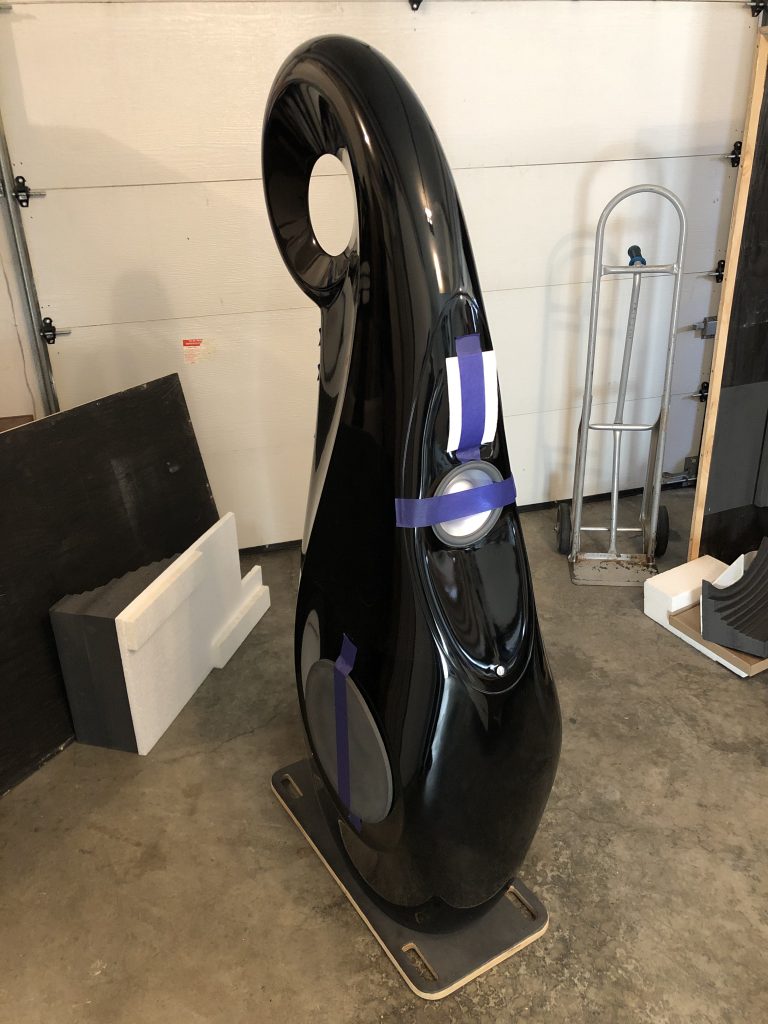
The VIVID GIYA 1 Series 2 at PF Central, immediately after uncrating, 2020 (photograph and image processing by David W. Robinson)
Unpacking
Uncrating the GIYAs turned out to be a task that my son, Saint John Robinson the Strong, and I could handle. Just! The 74kg/163lb weight was heavy, but the unique design of the cabinetry actually made the task much easier than it otherwise would have been. Carefully using the top hole of the cabinet as one holding point, made the job easier, and we were able to get the GIYAs up the stairs to our reference listening room without incident.
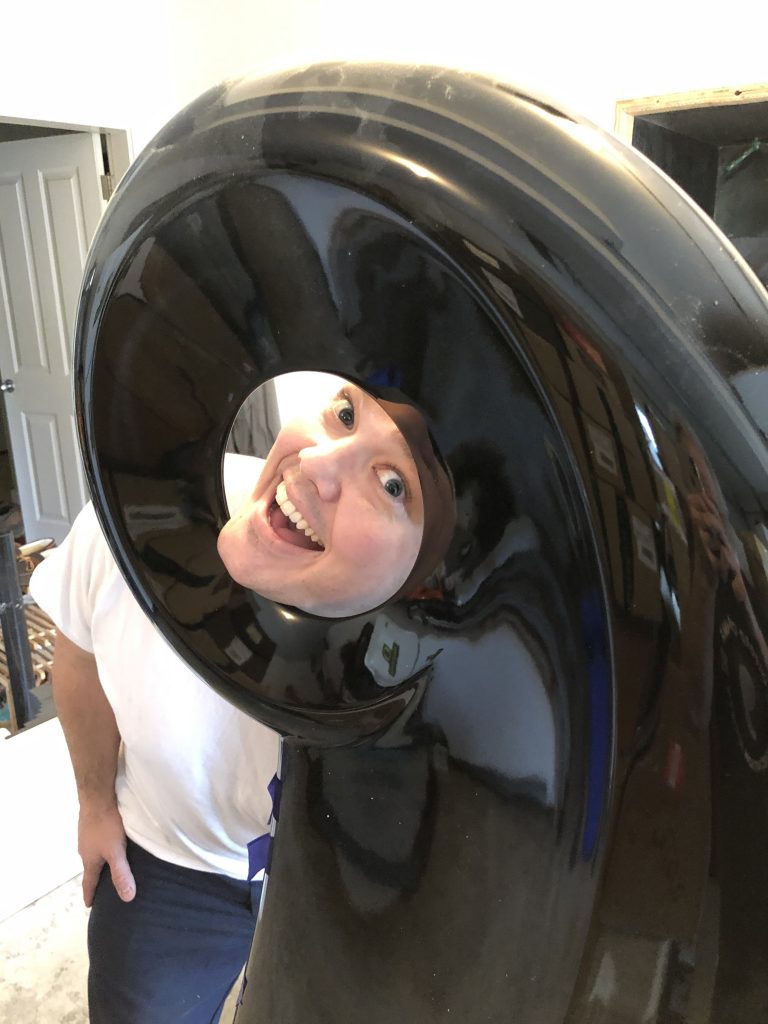
Saint John Robinson The Strong, enjoying the design of the GIYA 1 S2, which is still dusty from the unpackaging… (image and processing by David W. Robinson)
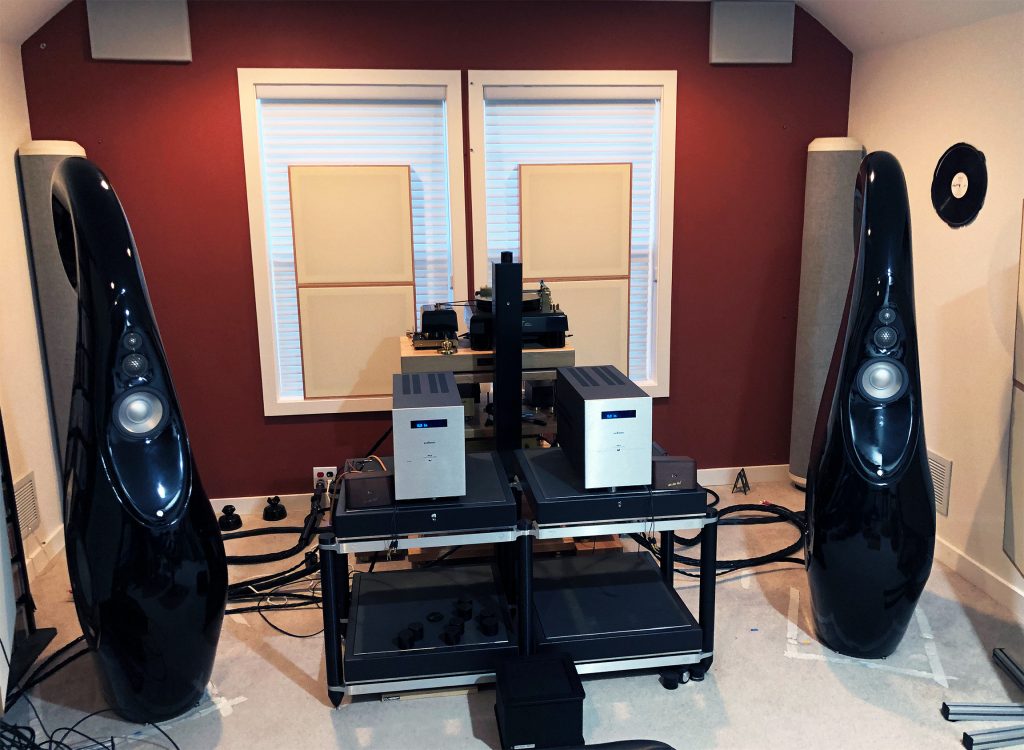
The VIVID GIYA 1 Series 2 with the Audionet MAX monoblocks, a Critical Mass Systems rack, and the Stillpoints Aperture panels deployed. Note that the van den Hul Extenders that you see here to each side of the MAX monos were not used, due to space constraints in the hookup chamber of the GIYAs. (Photograph and image processing by David W. Robinson)
Once in place in our stereo listening room, the GIYAs were spiked and cabled to the rest of our system.
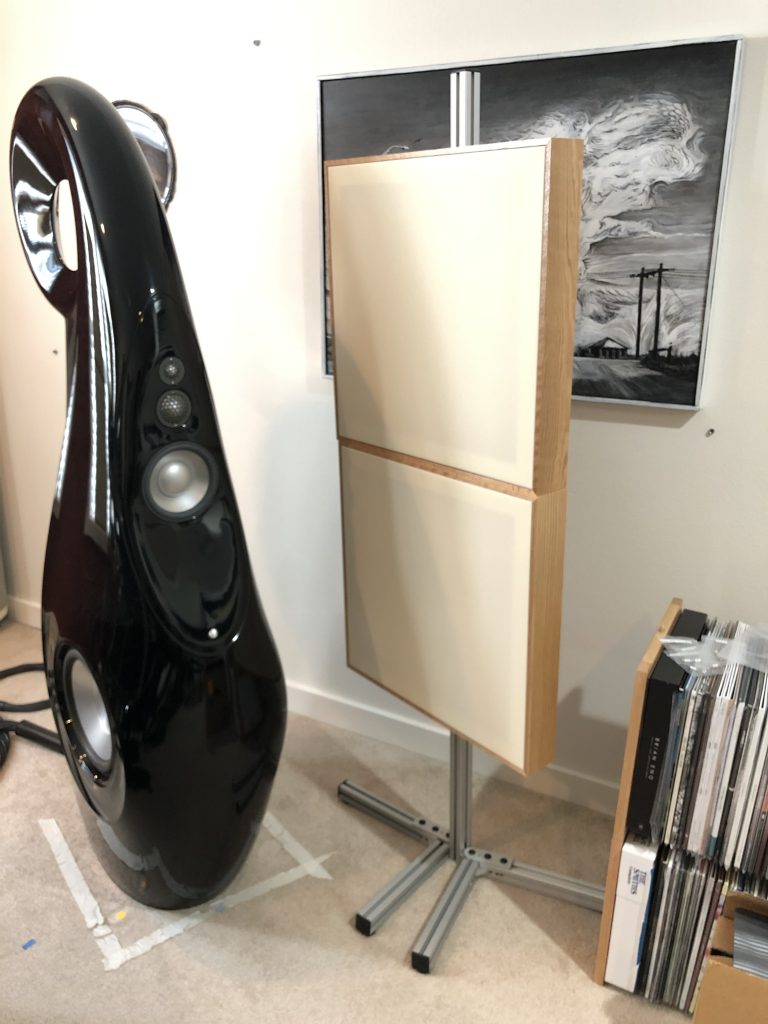
The VIVID GIYA G1 Series 2 in place next to the very helpful Stillpoints Aperture panel to control first-reflections in our listening room. (Photograph and image processing by David W. Robinson)
With most loudspeakers, this is a very straightforward, one-man job. You go to the rear of the loudspeakers, find the binding posts, and connect red to red, and black to black. Do jumpers if they're required. Done.
But with the GIYAs, the binding posts are located in the base of the loudspeakers. It's automatically a two-man job, since one will have to tip and balance the speaker, while the other attaches cables. (Note that VIVID allows for the careful tipping of the GIYAs on their side onto padded ground if a single strong person is all that you have to do the job. Me, I would strongly recommend two people for the cabling.)

The VIVID spike and jumper sets for the GIYA G1 S2 (Photograph and image processing by David W. Robinson)
The cabling compartment underneath is neatly laid out, but rather tight when it comes to space between the four binding posts. If you only have a pair of wires, then you'll use the VIVID-supplied jumpers to go from lower to upper circuits. Initially, I was going to use Synergistic Research SX Loudspeaker Cables, a standard dual-cable configuration, which worked wonderfully with the Raidho TD 4.2's backside connectors…lots of room there…but ran into a brick wall with the rather thick and noticeably not-so-pliable SXs in the GIYA's connection compartment. They simply would not fit. And the need for jumpers made things all the more too much. Furthermore, the rather small height of the VIVID spikes didn't provide much in the way of more clearance for thicker cables. You'll need to keep this in mind if you use garden-hose-size loudspeaker pipelines.
Faced with the challenge of cabling with the VIVIDs, I shifted to a pair of very fine GamuT reference loudspeaker cables that went from double spades at the amp side to quad banana connectors at the speaker end. The cables were much more slender, and worked like a charm in the GIYA's connection chamber. Since they were four-way, no jumpers were necessary, further easing things along. Problem solved.
As you'll see from the image two places up, the GIYAs were given a moderate toe-in…somewhere between 10 and 15 degrees…that brought them into focus in our space. That didn't take too long to dial in. Having two persons to get this right will save you time, of course.
After that, I fine-tuned the Stillpoints Aperture first-reflection-point panels to match the toe-in of the GIYAs. The Apertures really do make getting speakers right much easier, by taming the first bounce of the sound. As with all other speakers we've tried them with, the VIVID GIYAs benefited from the sense of expansiveness and control that the Apertures bring to the game. (That's why we have them not only left and right, but also in the back center of our stereo listening room and immediately behind the GamuT Lobster listening chair.)
And so, we were ready to start listening.
The system
The audio system used with the VIVID GIYA 1 Series 2 included the following:
- Playback Designs MPT-8 Reference Transport and MPD-8 Reference DAC
- Wave Kinetics NVS Turntable with Durand Tosca Tonearm and DS Audio Master1 optical cartridge and dedicated EQ/Phono Amp
- Aurender A30 all-in-one Music Server
- PASS Labs Xs Preamp
- AudioNet MAX Monoblock Amplifiers
- Cabling by GamuT, Synergistic Research, Kubala-Sosna, and JENA Labs
- Racks/Isolation Systems by Critical Mass Systems and Stillpoints
- Synergistic Research PowerCell SX AC power conditioner
- Synergistic Research HFTs, Atmosphere XL
- JENA Labs Sequoia Twig AC power conditioner with ground floating system
- Stillpoints Apertures
Overall, this is a powerful, revealing, front-rank supporting cast. If the VIVID GIYAs have what it takes to join my top-o'-the-heap…best-of-the-best category…then this system will show it.
The sound

"Trail of the Trace." Oil painting by Dan Zimmerman.
Well, this is where we always end up, isn't it?
But the wordsmithing challenge in dealing with the VIVID GIYA 1 S2 is substantial. It's so different in a number of ways that summing up my response to it has been hard, during these extremely difficult days of the pandemic.
Before I talk about the sonics and musical connection, I want to reflect on the unique look and feel of the GIYA 1 S2. The flowing curves, somewhat reminiscent of the lines of a Nautilus shell, definitely break with more hard-edged, boxy approaches to loudspeaker design.
VIVID's Web site statement of their philosophy underlines the feel that I have about the GIYAs.
"Nature dislikes straight lines almost as much as she abhors a vacuum. She knows that sound travels much more smoothly over curved surfaces; hence the shape of your own ear. Odd, then, that the standard loudspeaker design is still, by and large, a rectangular box. All those sharp edges and right angles produce reflections and resonances – the true enemies of recorded music. Because what you're hearing isn't the real performance: it's a version of it, overlaid with colours and textures the writer and performer never intended. If you want to hear the real thing, you need the GIYA G1.
There's not a single straight line in the G1 loudspeaker's enclosure. Ergo, no reflections, no resonances: just clear, uncoloured, uncluttered sound, where you can hear every note, word, breath and silence precisely as it was laid down. Music you've known and loved for years takes on new life, depth and clarity; it's like hearing it for the first time, reminding you why you fell in love with it. The G1 has always demanded an opinion; but when you hear it, prepare to find yourself asking not ‘why does it look like that? but ‘why doesn't everything else?'"
In fact, I spent some significant time…around 1.5 hours…online in a Skype session with Laurence Dickie, VIVID's design light, and Jim Noyd, PR for VIVID Audio, discussing Laurence's design philosophy summarized above. (This session was recorded, but unfortunately the rather large file got lost in the Cloud…don't ask me where. Don't ask them where. A damned shame, that.) Among the questions that I asked Laurence were about his personal story in audio, the history of VIVID, which launched in 2004, and key elements about what he thought was right, true, and beautiful in crafting loudspeakers.
At the heart of his vision for VIVID were the concepts that loudspeakers should have no resonance or breakups, and that there should be no internal reflections that are all too common in "boxy" loudspeakers. Furthermore, drivers should work in "perfect pistonic ways," which makes life much easier for the crossover. It's obvious that this philosophy has been executed with passion in the VIVID GIYA 1 Series 2.

Cross-section of the VIVID GIYA 1 Series 2, showing the positioning of the drivers, the baffling, and the internal curves of the cabinet
The GIYA 1 has a middling efficiency (91dB, 2.83VRMS at 1 meter), and a solid frequency response, although the bass does not quite reach down into the basement. Frankly, that's not a problem in most listening rooms. It takes a large room to really allow 20Hz sound waves to develop.
In addition to the curvaceous form and drivers, I should point out that the cabinet of the GIYA is rather unique, too. Composed of "Glass reinforced balsa cored sandwich composite," the very materials of the GIYA are both highly inert, and inherently beautiful. There is a smooth gloss that is a pleasure to see and to touch. More importantly, it seems to tame reverberations and resonances nicely without weighing half a ton.
During the months that the GIYA 1's were here, I sent my usual array LPs, SACDs, Single/Double/Quad DSD, and streaming PCM (both Qobuz and TIDAL) to them. Some are my usual long-term friends; others were new or trial recordings that I fancied.
Among them, some warhorses on LP and SACD that need no further introduction or comment…this is just for the record, so to speak.
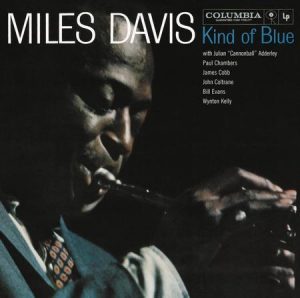
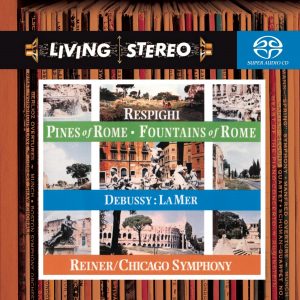
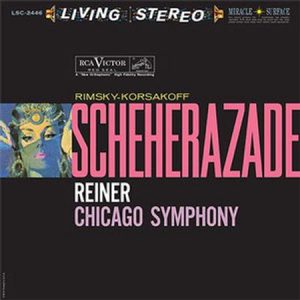
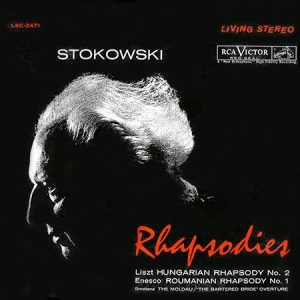
…as well as some newer recordings on LP, Quad DSD, and streaming that caught my ear while the GIYA 1 S2 was here.

Hyperspace, Beck's latest. Brilliant, and well recorded, which shows up even when streaming. The LP is grand.
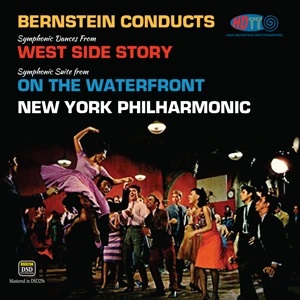
From High Definition Tape Transfers: Bernstein at his greatest as composer and conductor, very well captured here.

The soundtrack album to the powerful HBO miniseries, Chernobyl. Deep, dynamic, and haunting, a brilliant soundfield album. If you haven't seen the series…do it! Afterwards, get the soundtrack album. Once you've done the first, you'll understand the second.
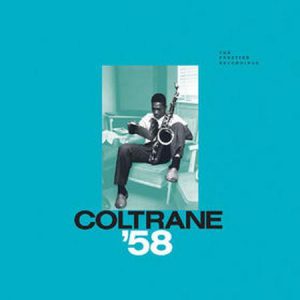
Coltrane. Need I say more? In a lovely binder-style box set. Go get it.
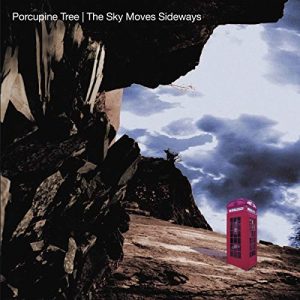
Steven Wilson and Porcupine Tree back in the mid-‘90s, knocking it out of the park with this brilliant progressive rock album. In fact, I'm listening to this now, as I write. First rate when you want to kick back and kick out the progressive jams in your listening room. Get it now…thank me later.

Another example of progressive-alt musical genius from Steven Wilson. Ultra-cool sliding inner cover on the LP…can't have that with other formats! A fine reference recording for the genre, and lots of music yumminess for those who dig.

Stranger Things, season one. The series is a great kick for those of us who love horror/sci-fi, and the music here is haunting, well performed, and nicely suitable for working out your audio system.

Hah! The Lord of the Rings: The Fellowship of the Ring, Volume 1 of a three boxset series, which I am extremely pleased to say that I own them all. Really dynamic, finely recorded, with a full and luscious sonic range in play. If you've seen the movie (and who hasn't?), I need not explain the appeal of this soundtrack, which is quite comprehensive. Not nearly every "soundtrack" does what this wonderfully ambitious set accomplishes in a monumental way. (You know. Like the movie series.) The GIYA G1's loved carting these albums, believe me…

A Quad DSD album from TRPTK over at NativeDSD.com…killer contemporary classical-fusion work here!
On top of that were the various streaming albums and DSD archives on our QNAP NAS via the Wolf Audio Systems Alpha 3SX/Media Center Music Server tandem…to many to name, or even count. The music was all over the block, from classical and jazz all the way through to alternative rock and classic rock ‘n roll. Eclectic tastes here!
As time has passed, I have found my evaluations of audio gear and the sound of systems to be shifting more and more to the emotional connection to the music that they provide. Jeff Day of "Jeff's Place" at PF and I have discussed the language of fine audio reviewing several times this year, based upon some intriguing new directions that Jeff and Peter Qvortrup of AudioNote UK have been developing over time. To see the unfolding development of Jeff and Peter's thinking, which has some real convergence with the progression of my own thinking, you can start here…
https://jeffsplace.positive-feedback.com/meditations-on-high-fidelity-an-introduction/
https://jeffsplace.positive-feedback.com/meditations-on-high-fidelity-the-history-and-evolution/
…and then go on to especially here:
Don't just stare at those links. Do yourself a favor and actually read the associated articles.
I mention this, because while I can characterize the performance of the VIVID GIYA G1 S2 in the usual categories…for example…
The dynamics are superior. The GIYAs surprised me with their performance in this regard, with real slammo-bammo happening on demand, and a reasonable effortlessness in doing so, regardless of the source: LP, up to Quad DSD, SACD, and streaming PCM.
Pace, Rhythm, and Timing (PRAT), one of our audio-friend-departed Art Dudley's favorite categories, was quite fine with the GIYAs. I equate superior PRAT with what I call flow…the way that a system, and its associated loudspeakers can deliver the musicals and sonics so that they stream and move in a soulish way. There was a real rightness
In the realm of detail, the GIYAs pleased me with their "not too hot, not too cold, just right!" level of both micro and macro detail. You particularly notice this on LPs like Howard Shore's Lord of the Rings: Volume 1, The Fellowship of the Ring box set. LP after LP was revealed by the GIYAs to have great complexity of detail, which they handled with real nuance. No congestion; no muddiness; nothing even remotely analytical. Nicely done. Ditto the timbre of the notes via the GIYAs, which tonalities struck me as quite satisfying tonally.
Bass, midrange, and upper frequencies were all handled in a commendable way. At no point did I notice any beaminess or dis-integration of the driver set, which I attribute to Laurence Dickie's combination of driver selection, his support technologies for his designs, and what is obviously a well-tuned crossover. The side-firing woofers, a configuration that is rare in these here woods, filled the room with a lower foundation that was most satisfying, despite not quite achieving 20Hz at the bottom end.
Imaging and soundstaging, the focus and dimensionality of the music in a system, were both quite satisfying with the GIYAs. With LPs, DSD, and SACDs, and with superior recordings, both the placement of individual instruments in the sonic field were accomplished with commendable precision…but without the great goblin of being analytical…while the soundstage was both wide and deep. (Soundstage depth is particularly important to achieve.) This was in the general range of the best loudspeakers that we've heard here on all high-resolution sources.
[shifting back to complete the thought!]…I could also praise the GIYA G1 S2s in terms of their flow (described above), organics (the sense of living musical beauty and harmonic integration), and its ability to help you become one with the music…the essential soulish emotional connection that only top-notch components, and the synergistic systems that can be made with them, can do.
Yes, the GIYA G1 S2s really did all of it quite well, for months on end.
In fact, it's furthered my meditations about the language that we use in fine audio reviewing. There are components and systems that go beyond the ordinary…sometimes way beyond the ordinary…and deliver some level of transcendence, glory, and audio bliss. I know what I've heard that's done this for me over the decades, it being a relatively short list, and to that I've now added the VIVID Audio GIYA G1 Series 2.
Enough said.
Conclusion

"The Systematist" 2017; painting by Dan Zimmerman
So, after so much thought, writing, re-writing, and so many damned interruptions, what do I think of the VIVID Audio GIYA 1 Series 2?
In the GIYAs I found that form didn't merely follow function; form embodied function, and seduced me with its ability to invoke function. The very shape of the GIYAs was sonic sculpture, calling forth nature itself, suggestive of the waves of sound, the Fibonacci of fidelity, and the sort of organic connection that all great music and all great audio arts make. Erotic in its boldness, the GIYAs simply allowed the great recordings to…
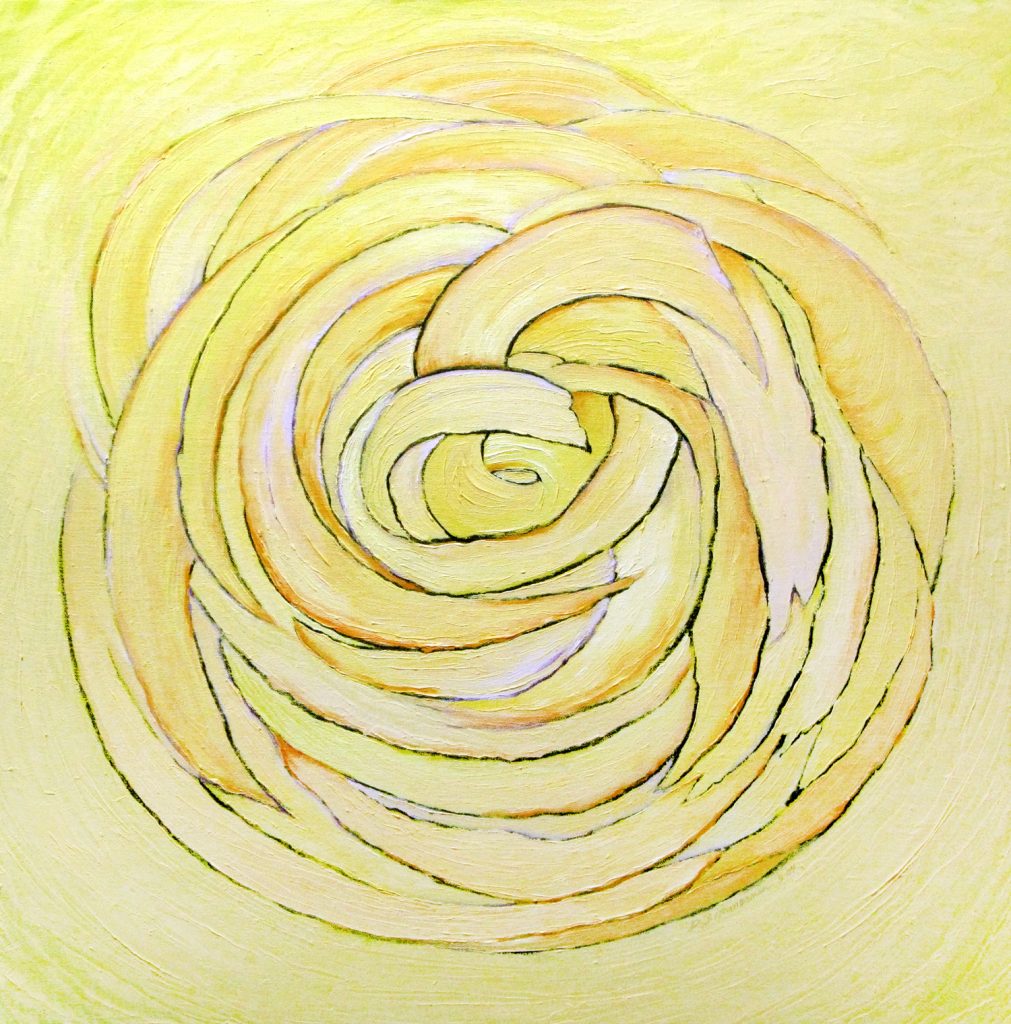
"Rotation" Painting by Dan Zimmerman
FLOW.
Flow, flow, flow, and again I say flow. I so doing, it completed the clasp of touch, with its sculpted caresses inviting handling, both physically and aurally. What boxier designs can do, but only by overcoming boxiness (which the great ones do), the GIYAs seem to have by birthright, by the act of creation. In this, Laurence Dickie has shown himself to have the true boldness of and seductive vision of the great artist.
In saying this, as an artist myself, I pay him the highest of compliments…

So, I adjudge the GIYAs to be clearly in the front rank of high-end loudspeakers that I've heard. What I had heard to be so promising at audio shows was finally confirmed in my own listening room to be top notch, regardless of the source that I used with it.
Seductive, alluring, and highly satisfying, VIVID Audio's GIYA 1 Series 2 Loudspeakers towed my heart away for the months they were here. I was very sorry to see them go.
I therefore gave them one of my Brutus Awards at the end of 2020, with real enthusiasm.
Update: In the strange and extended delays of this year of the pandemic, which interrupted my work repeatedly, the GIYA G1 Series 2 was superseded by the newer VIVID GIYA G1 Spirit. Given the commentary at this link, I can well imagine that this new design will take the GIYA to a new level of audio performance.
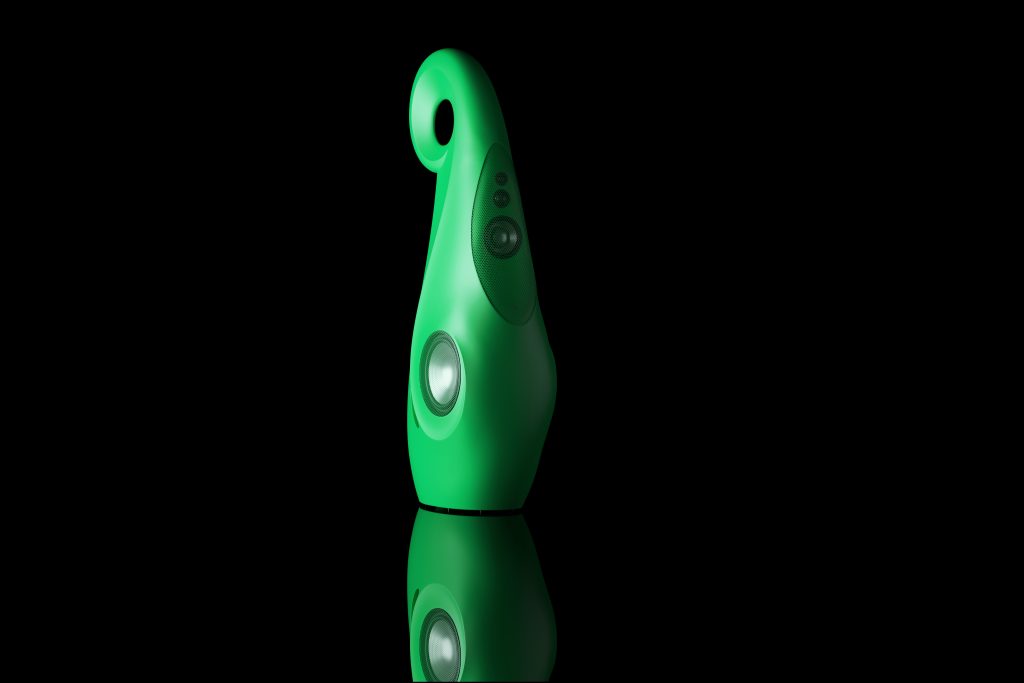
The GIYA 1 Series 2 in one of its available colors: a bloody bold green! (Image courtesy of VIVID Audio.) The multiple color options continue in the new GIYA G1 Spirit.
GIYA 1 Series 2 price: US $68,000 per pair, in either piano black or white finishes (standard); from US $74,000 per pair in "bespoke" (custom) colors. Contact VIVID Audio regarding available colors and new pricing for the GIYA G1 Spirit.
VIVID Audio
VIVID Audio U.S. Distributor
Todd Sutherland
Email: [email protected]
All photographs/drawings/paintings as credited. The Alice in Wonderland drawing is by John Tenniel, and is in the public domain.




